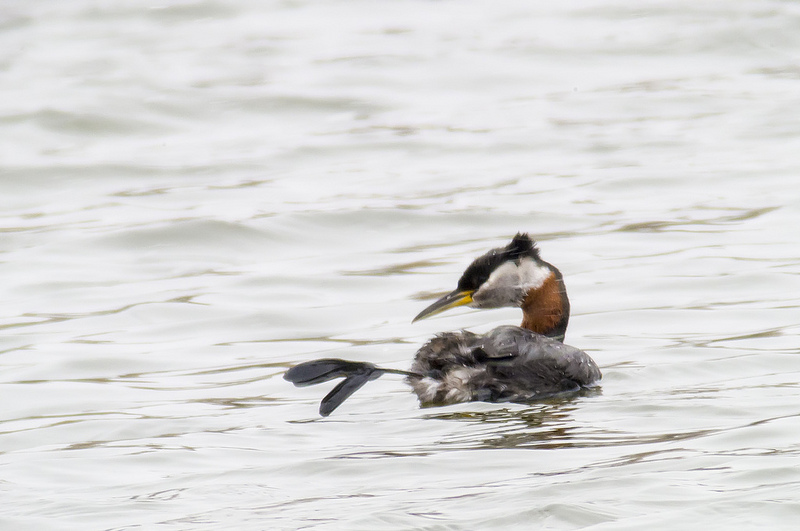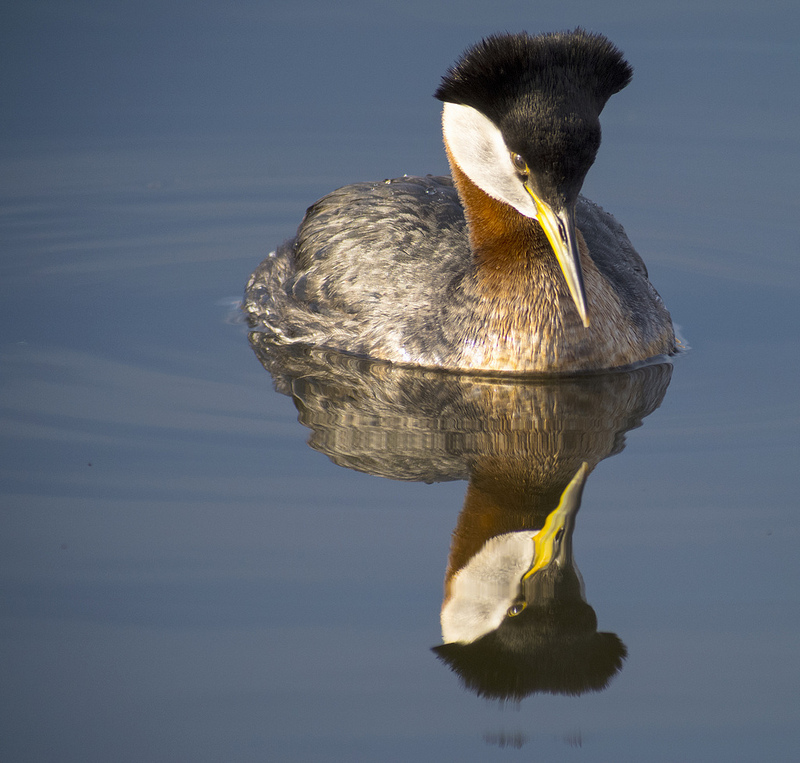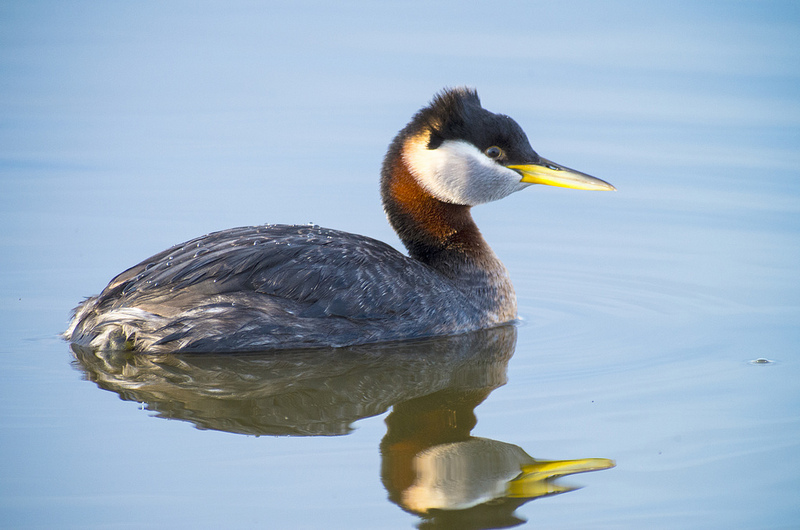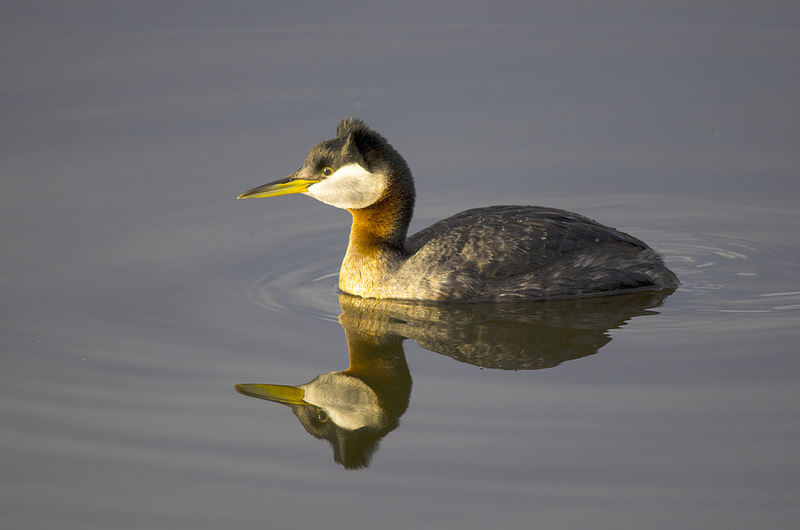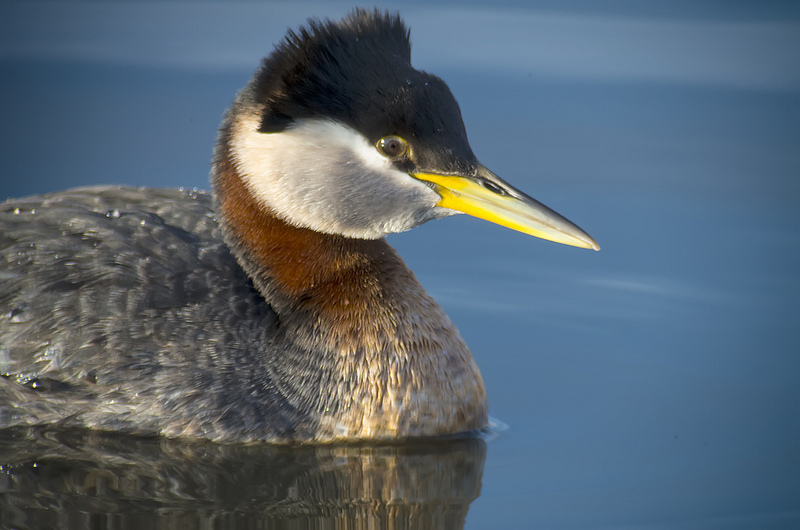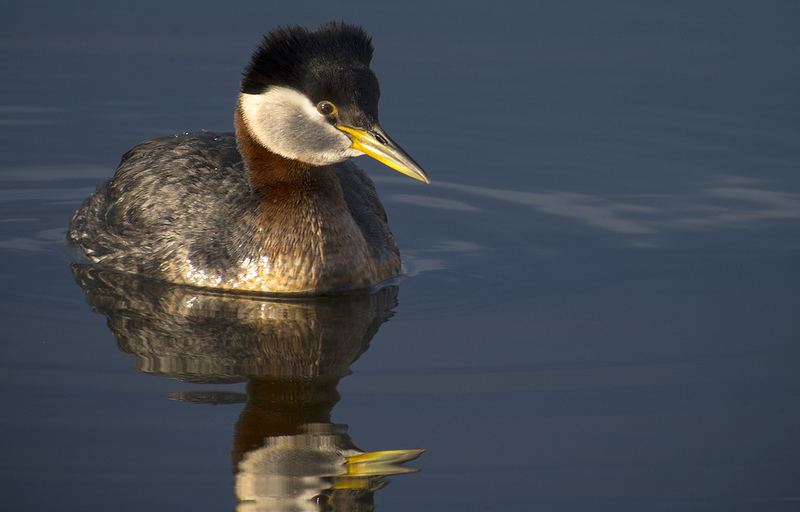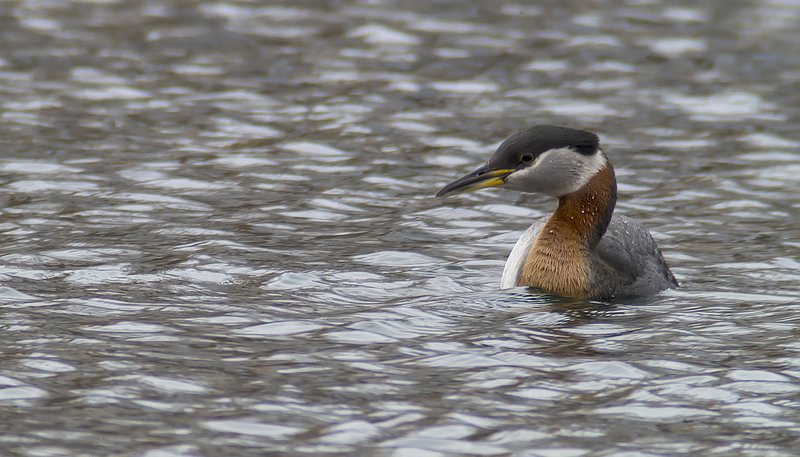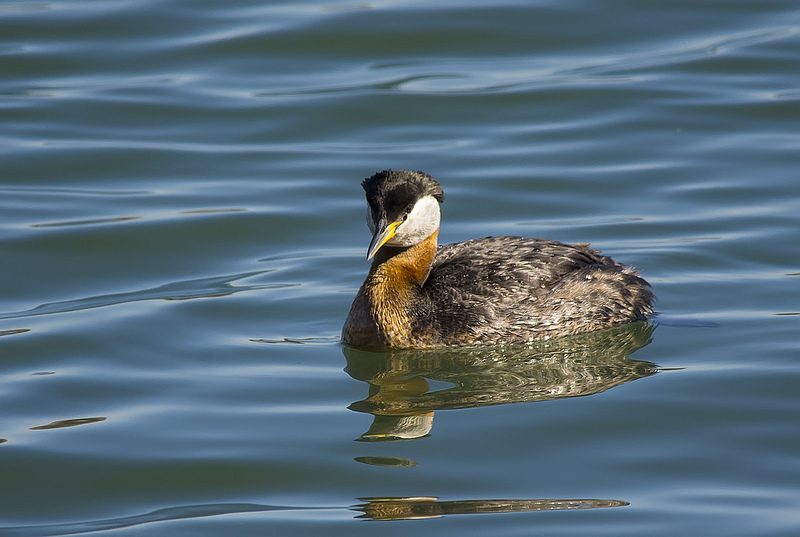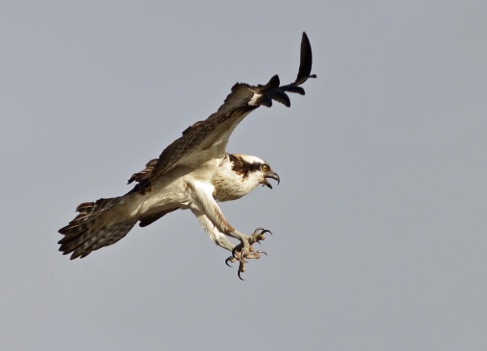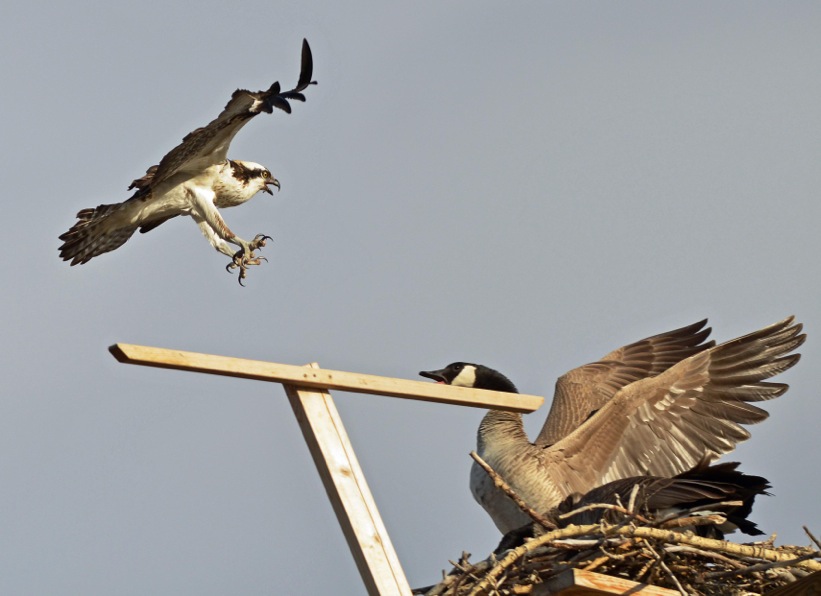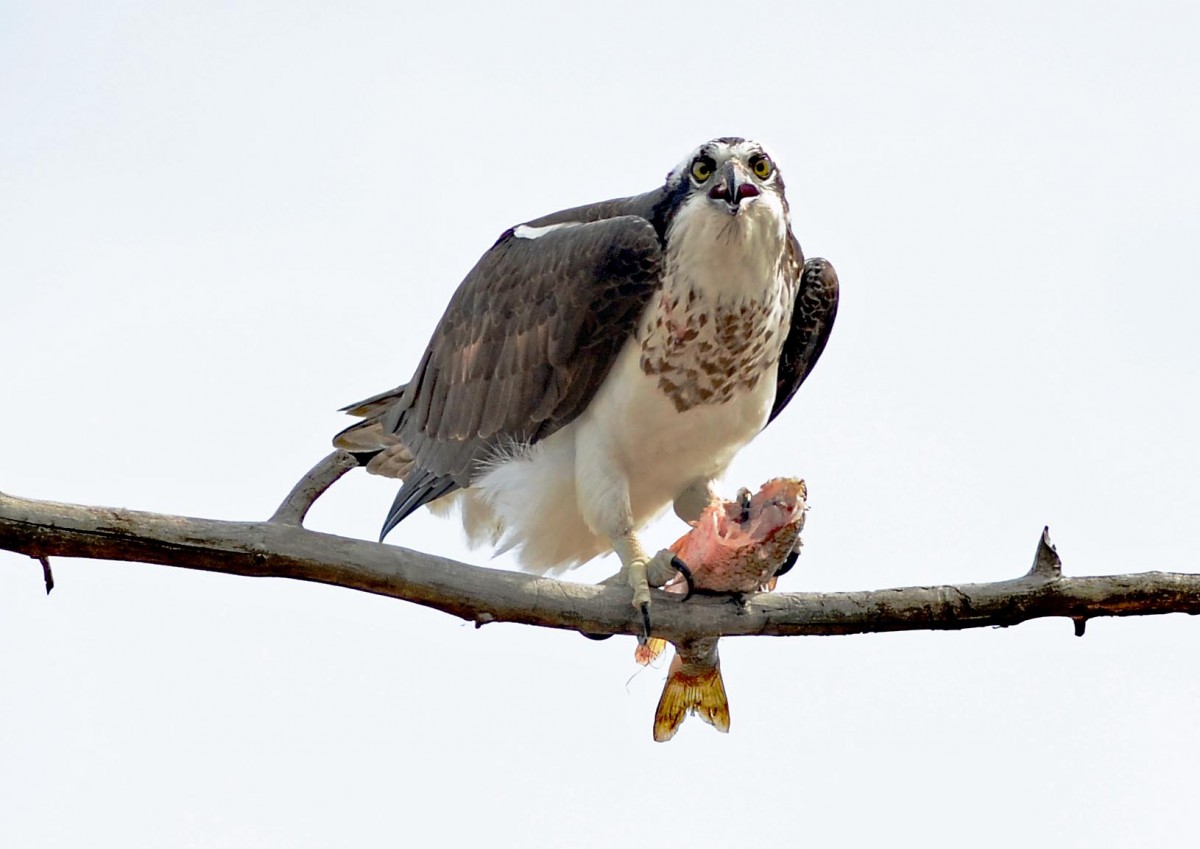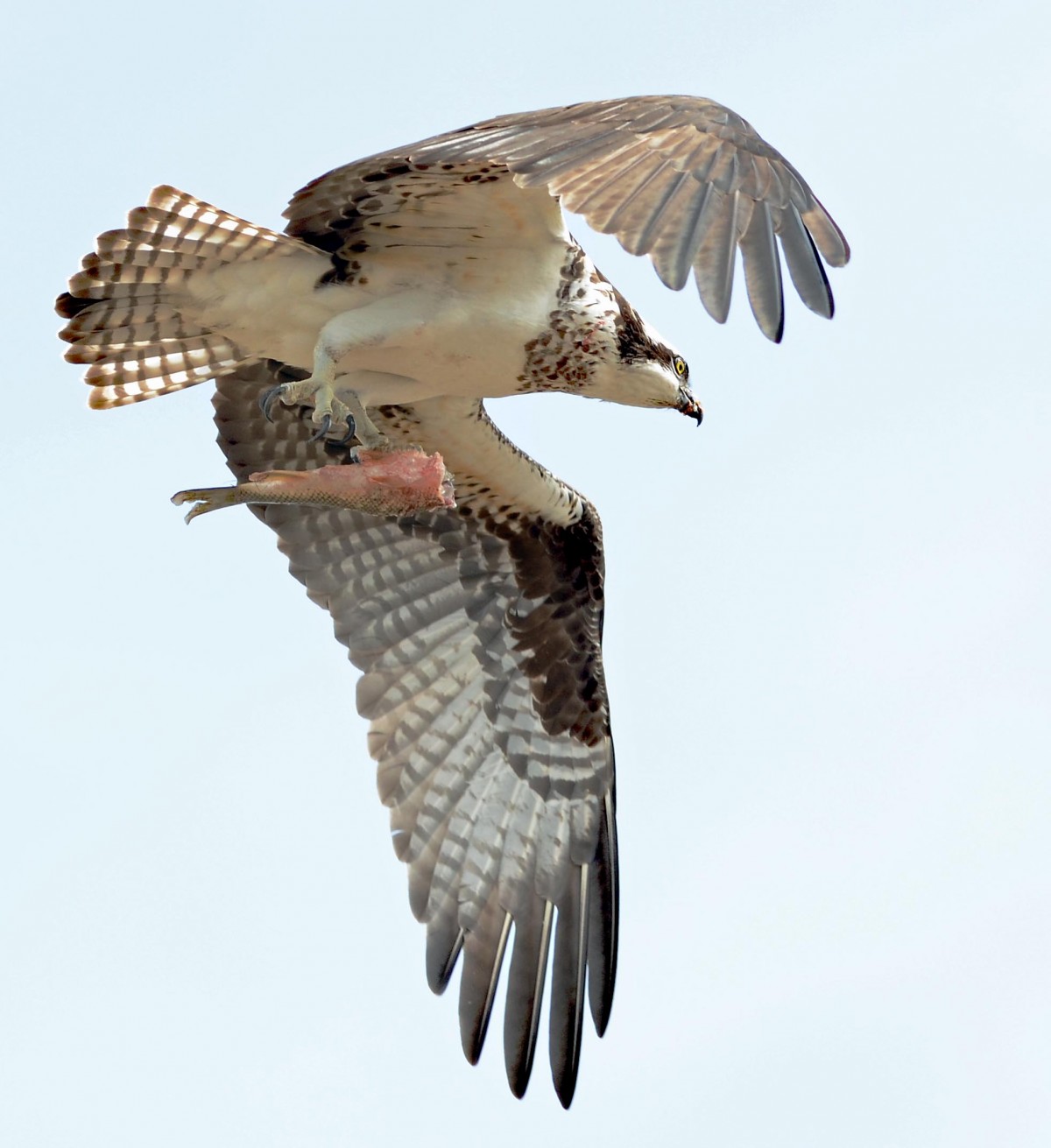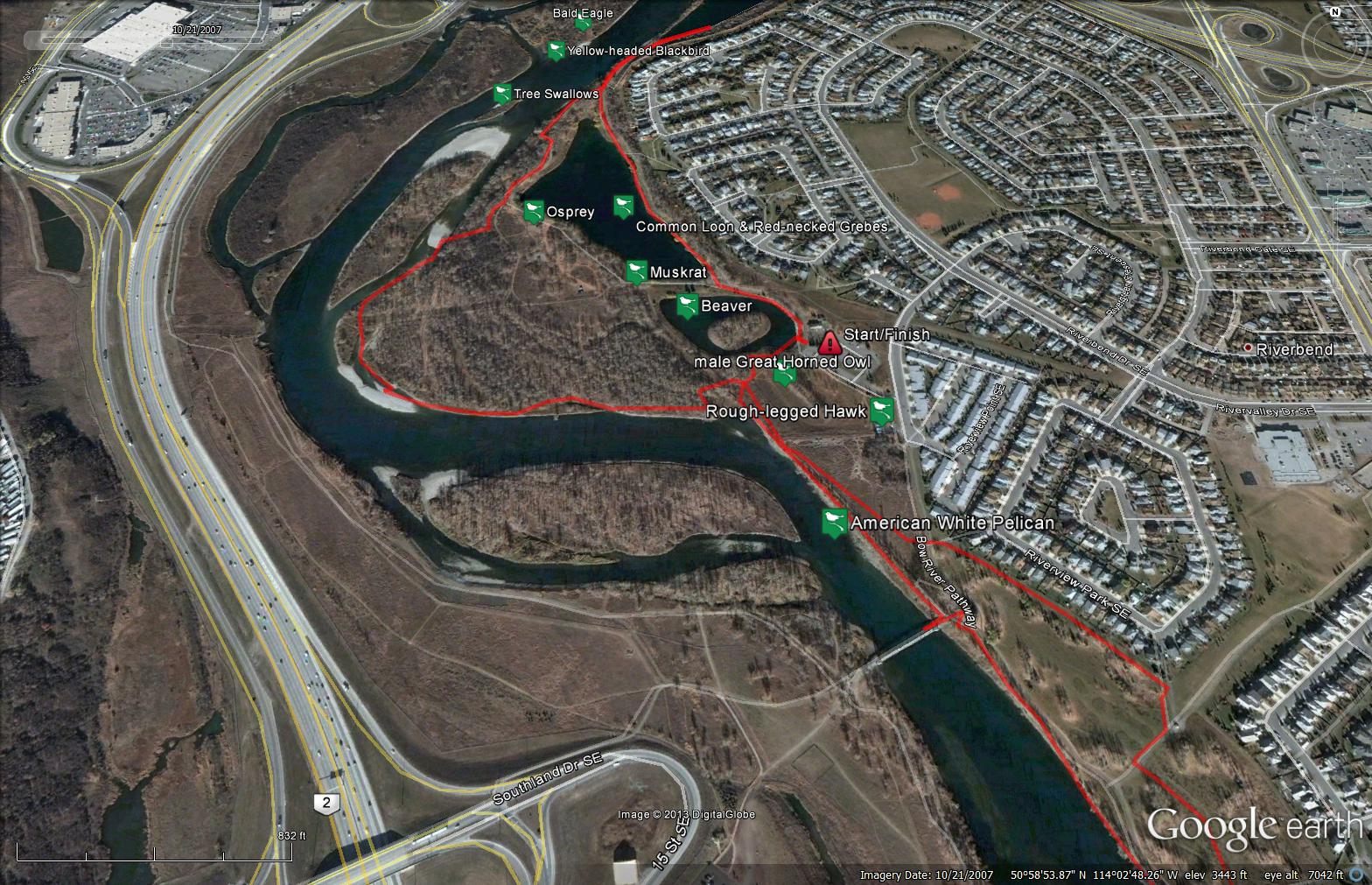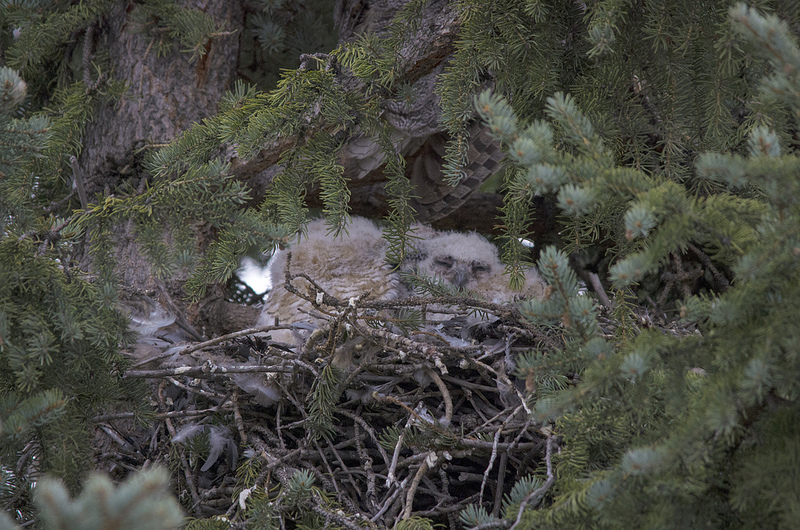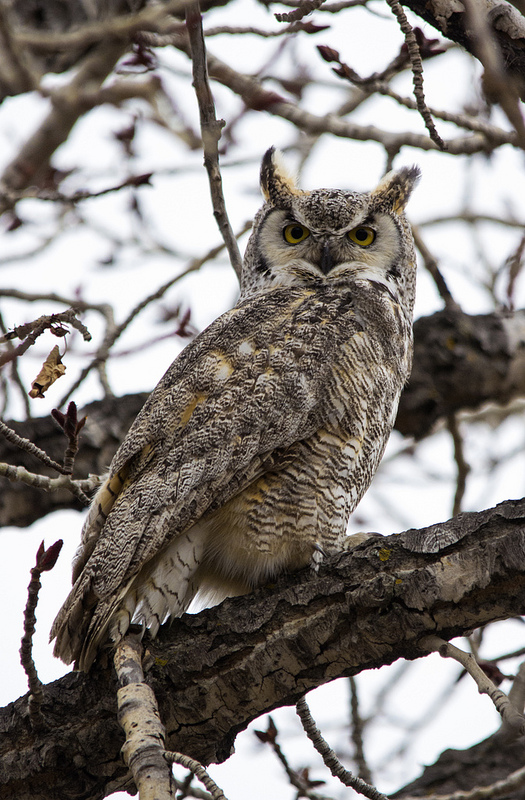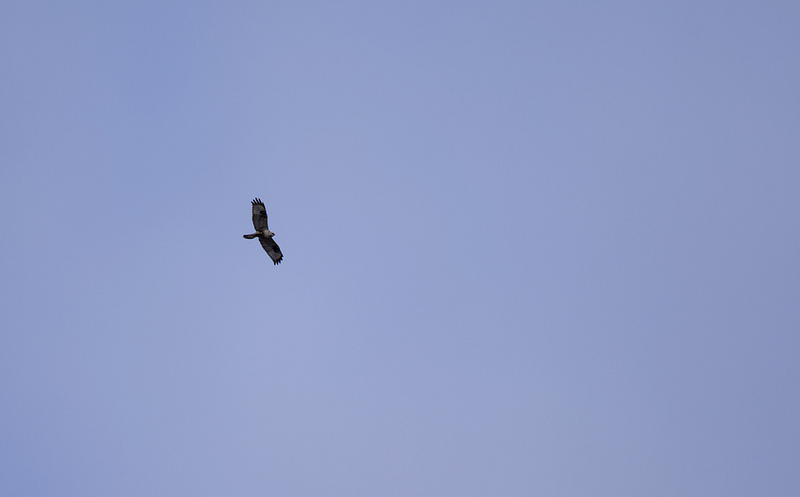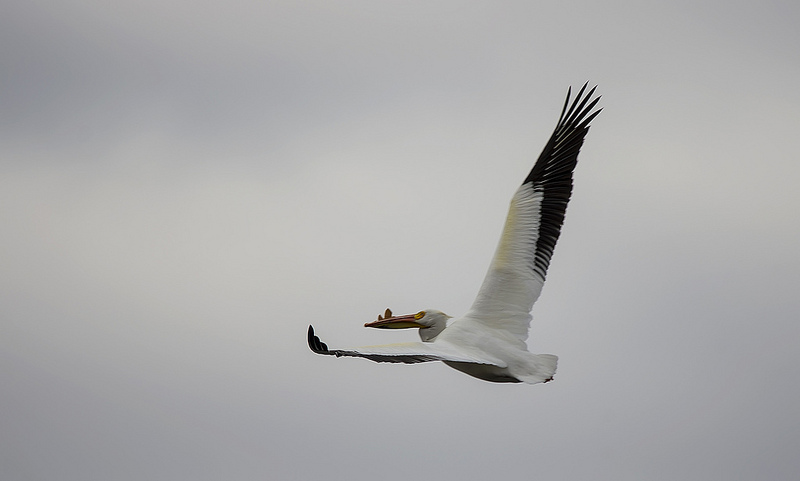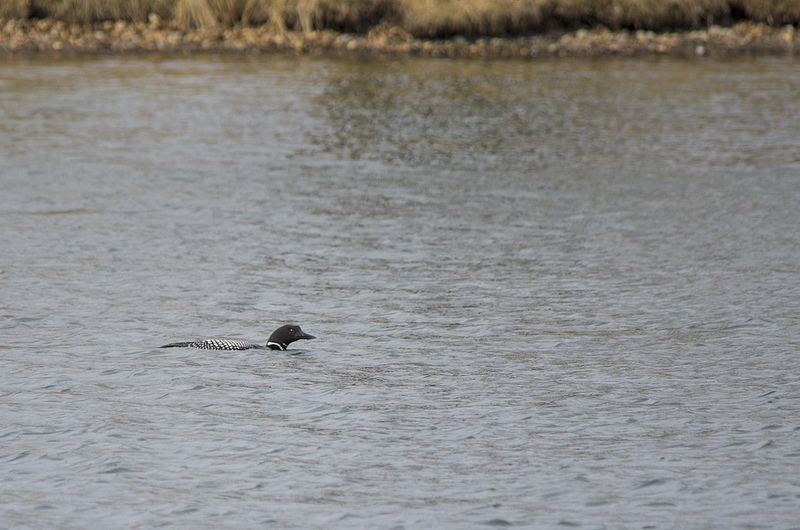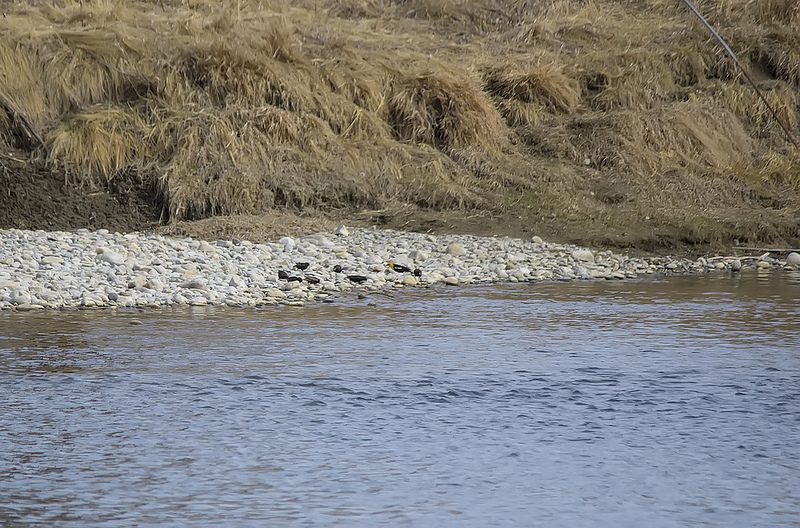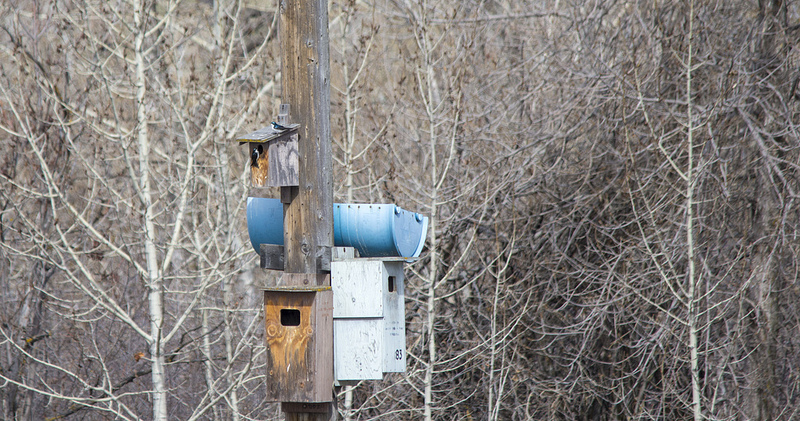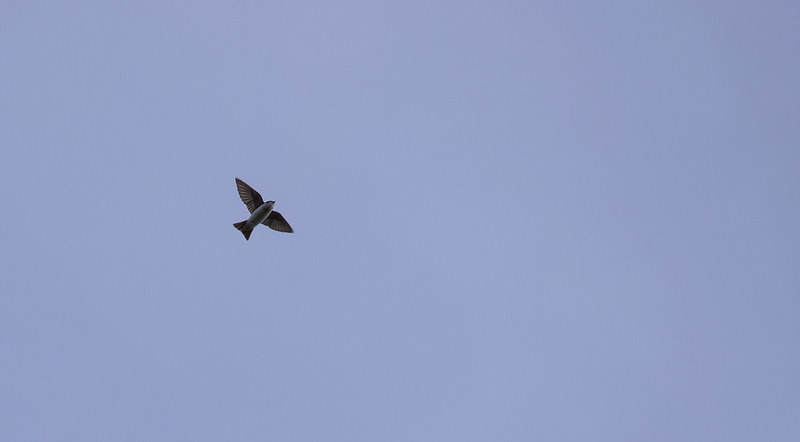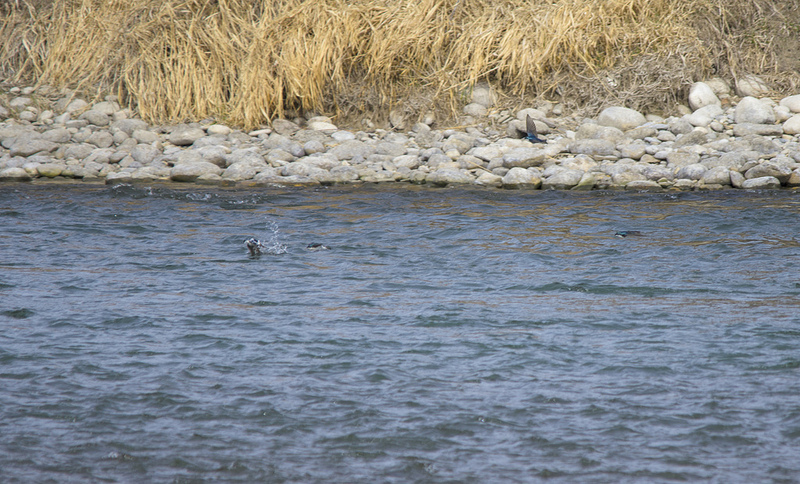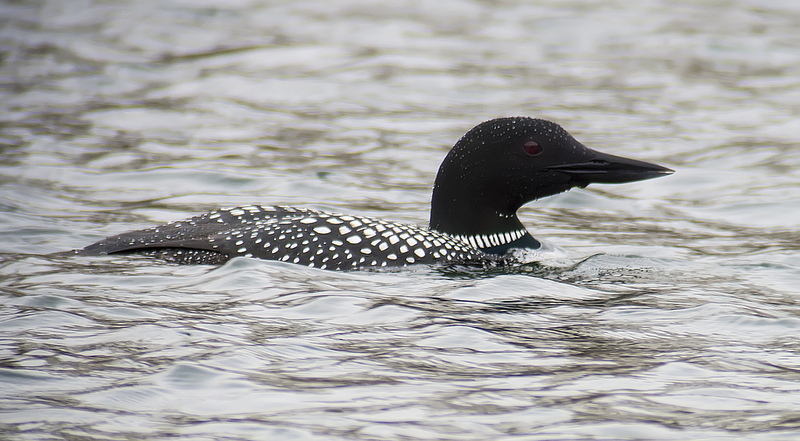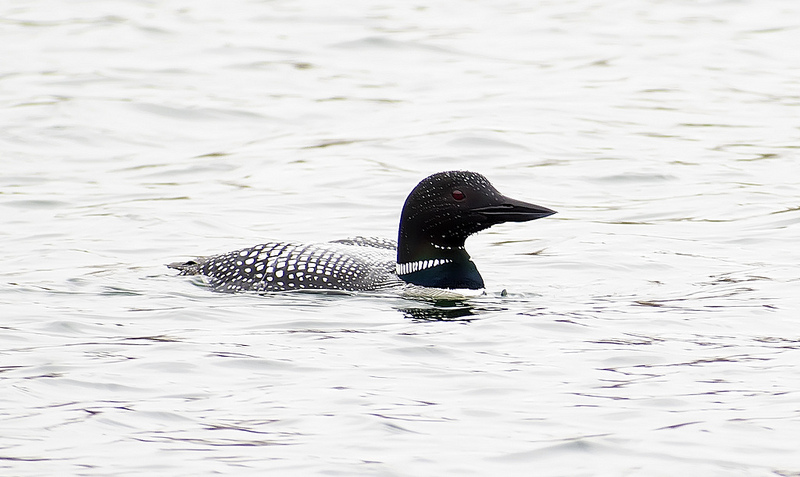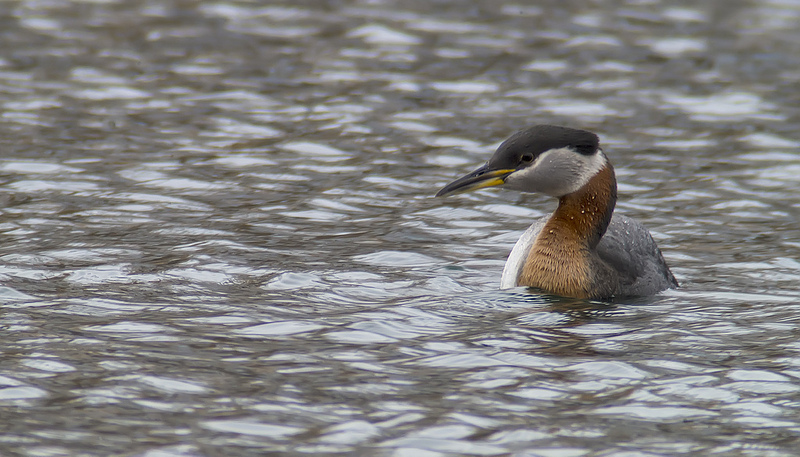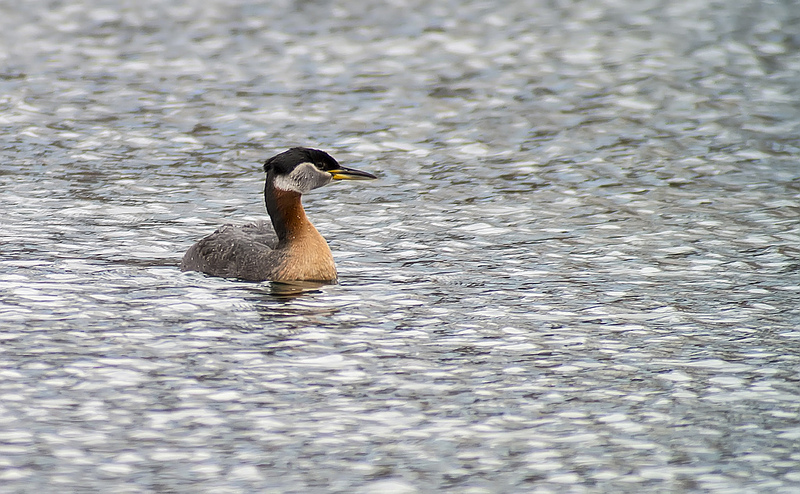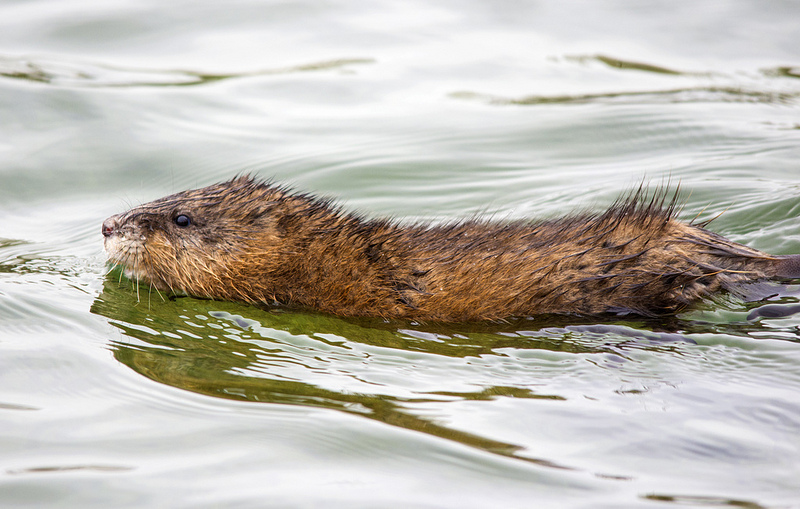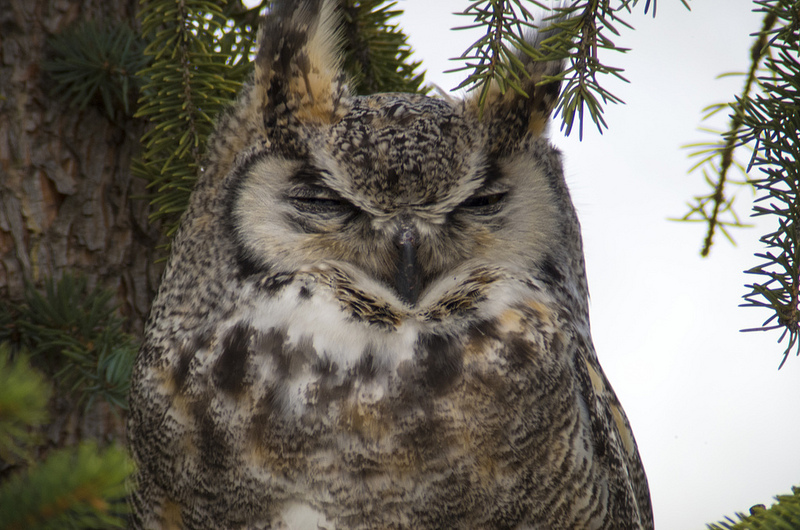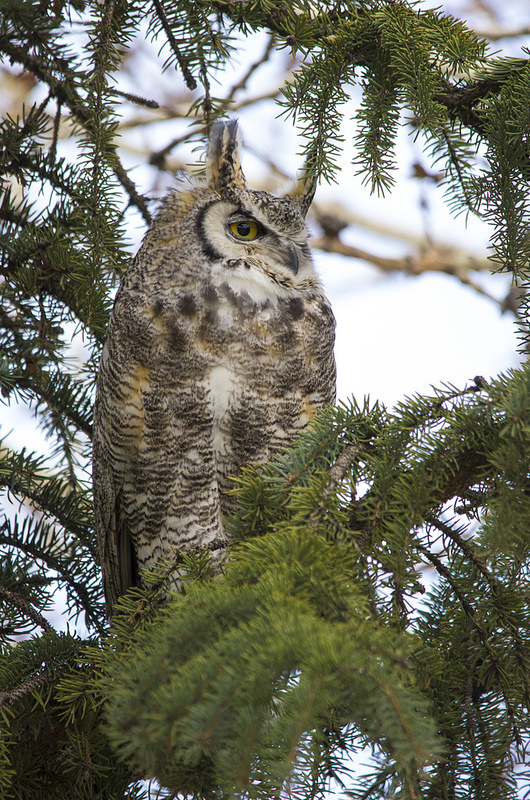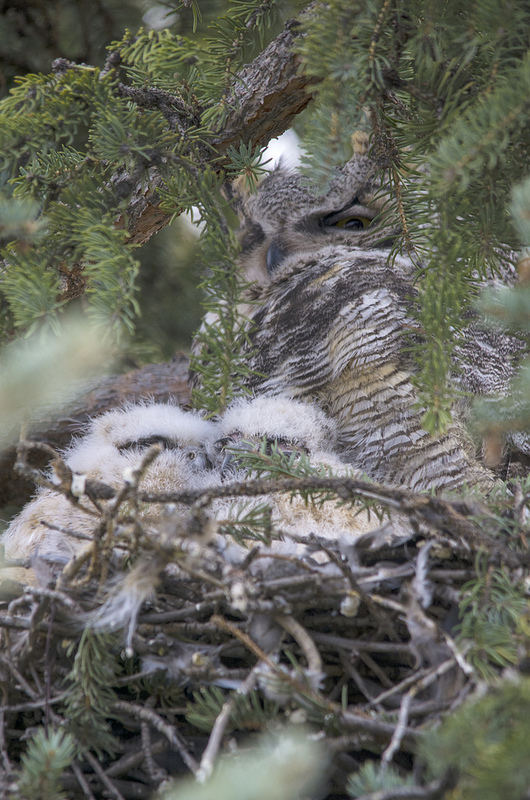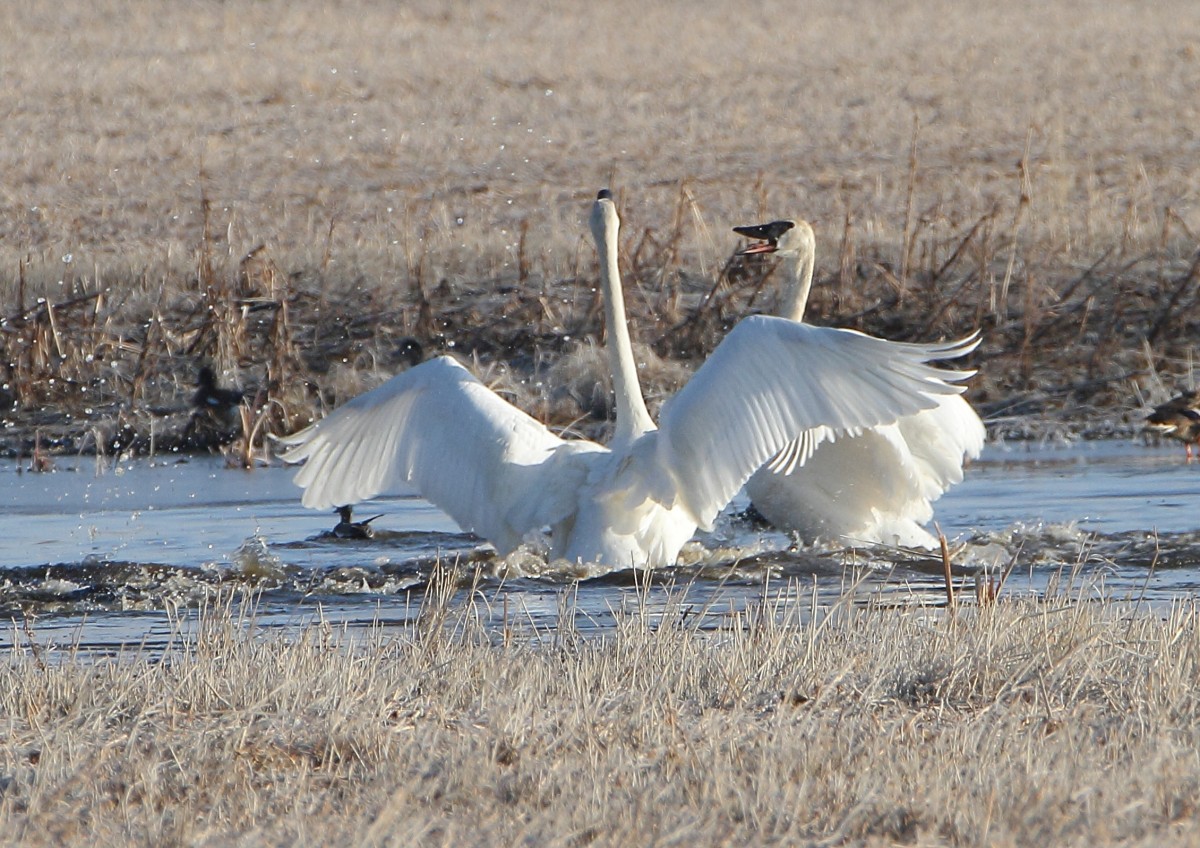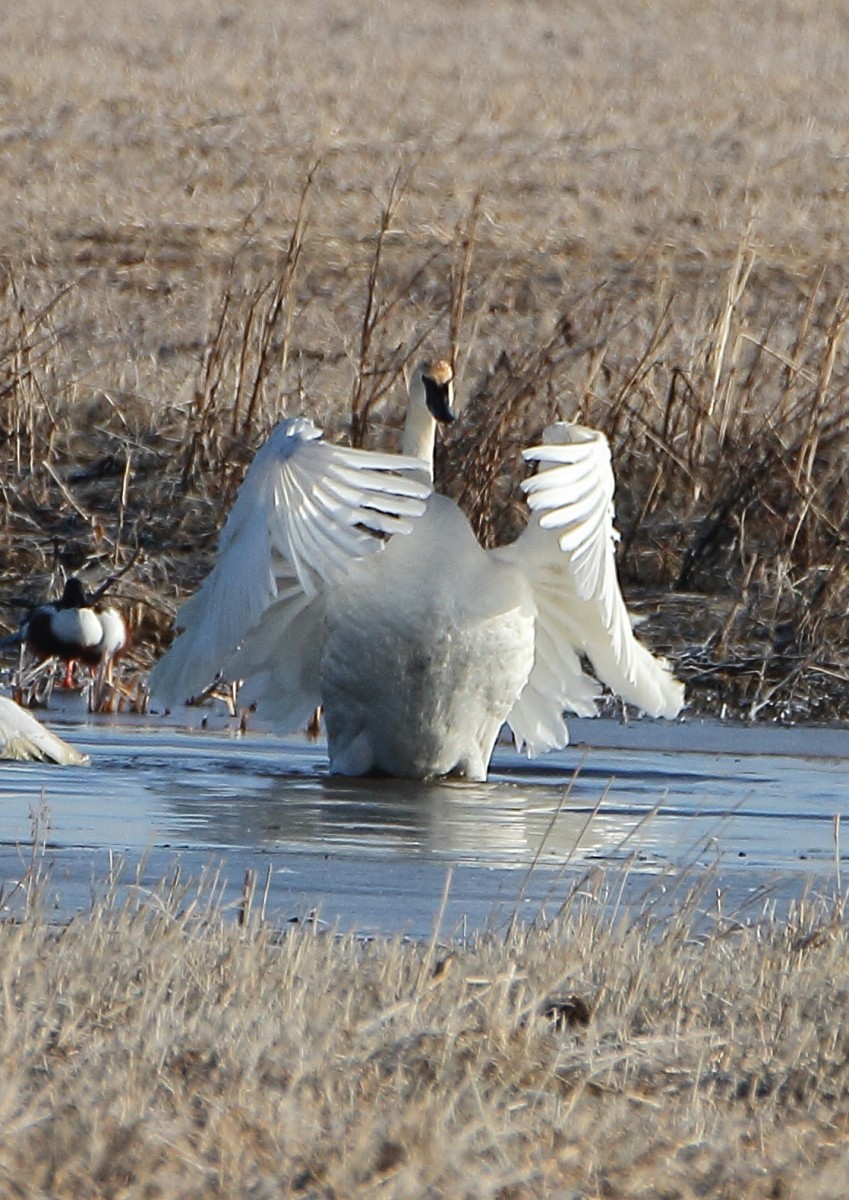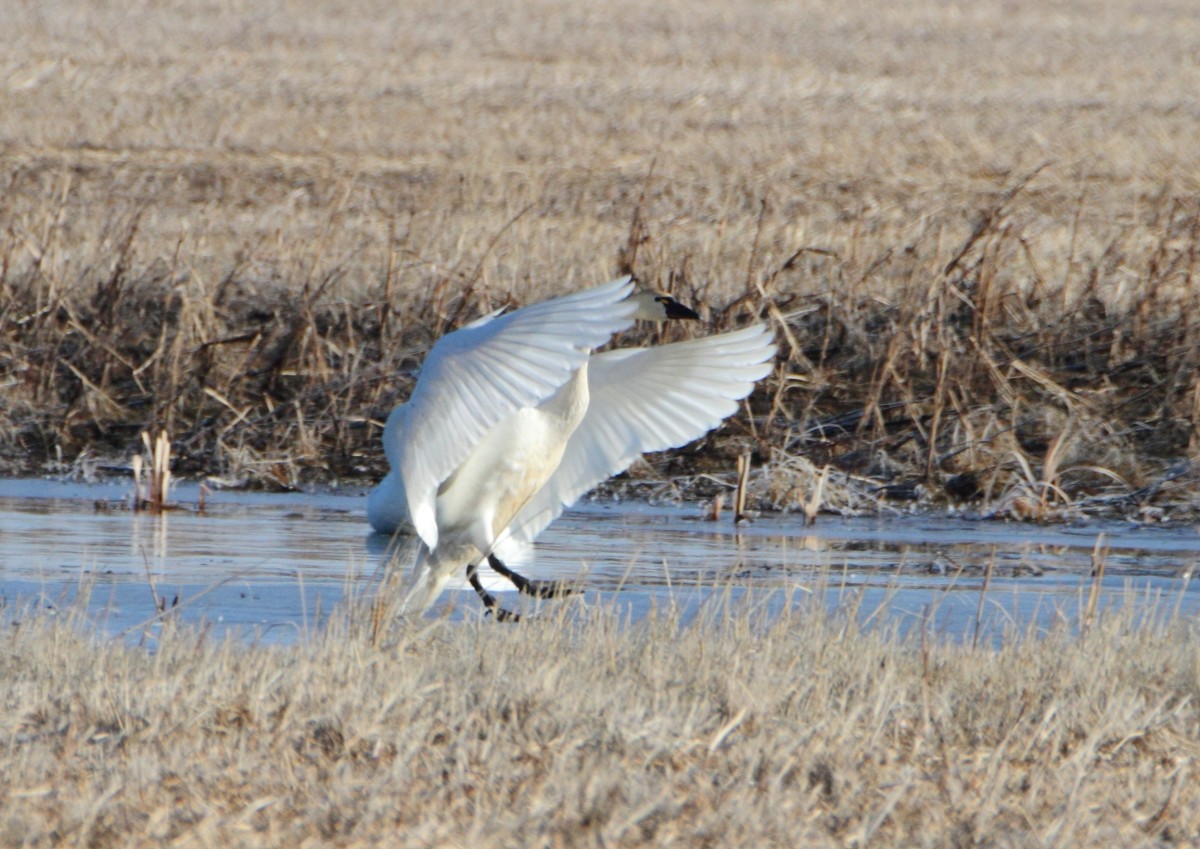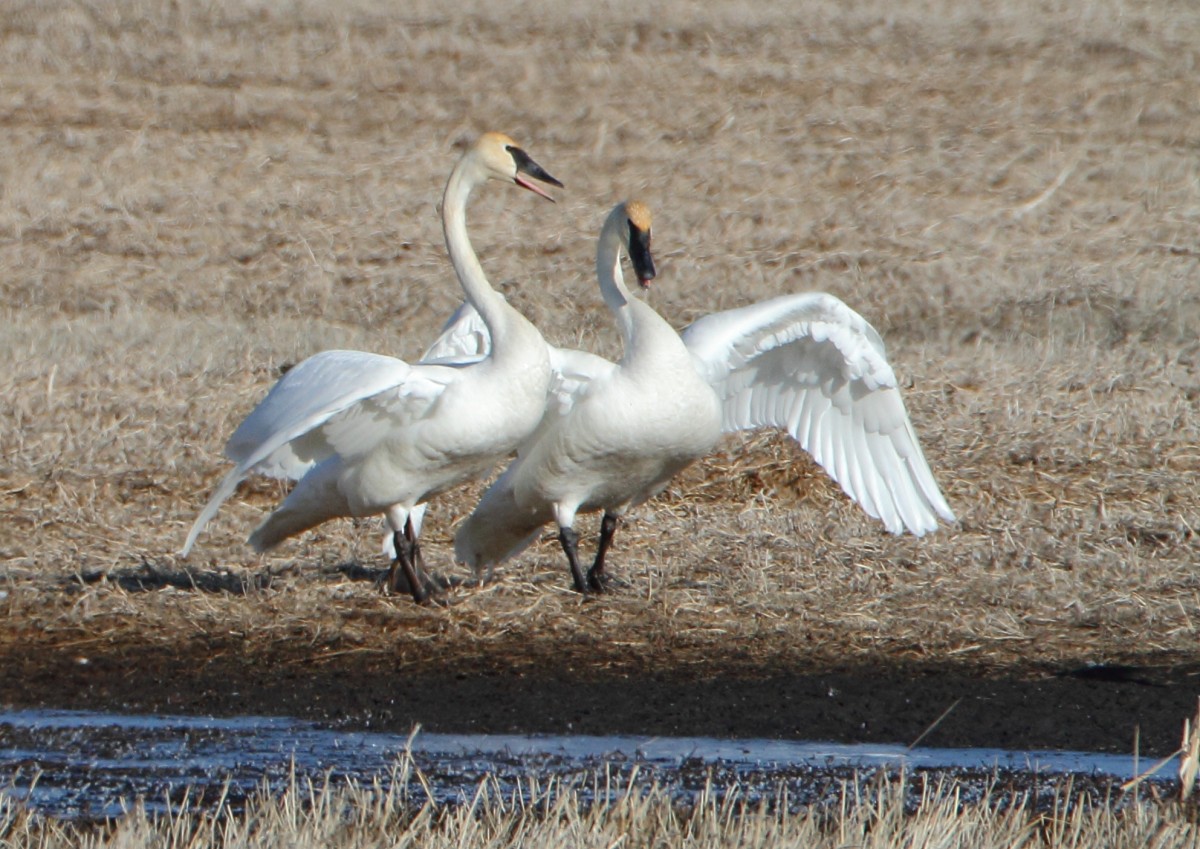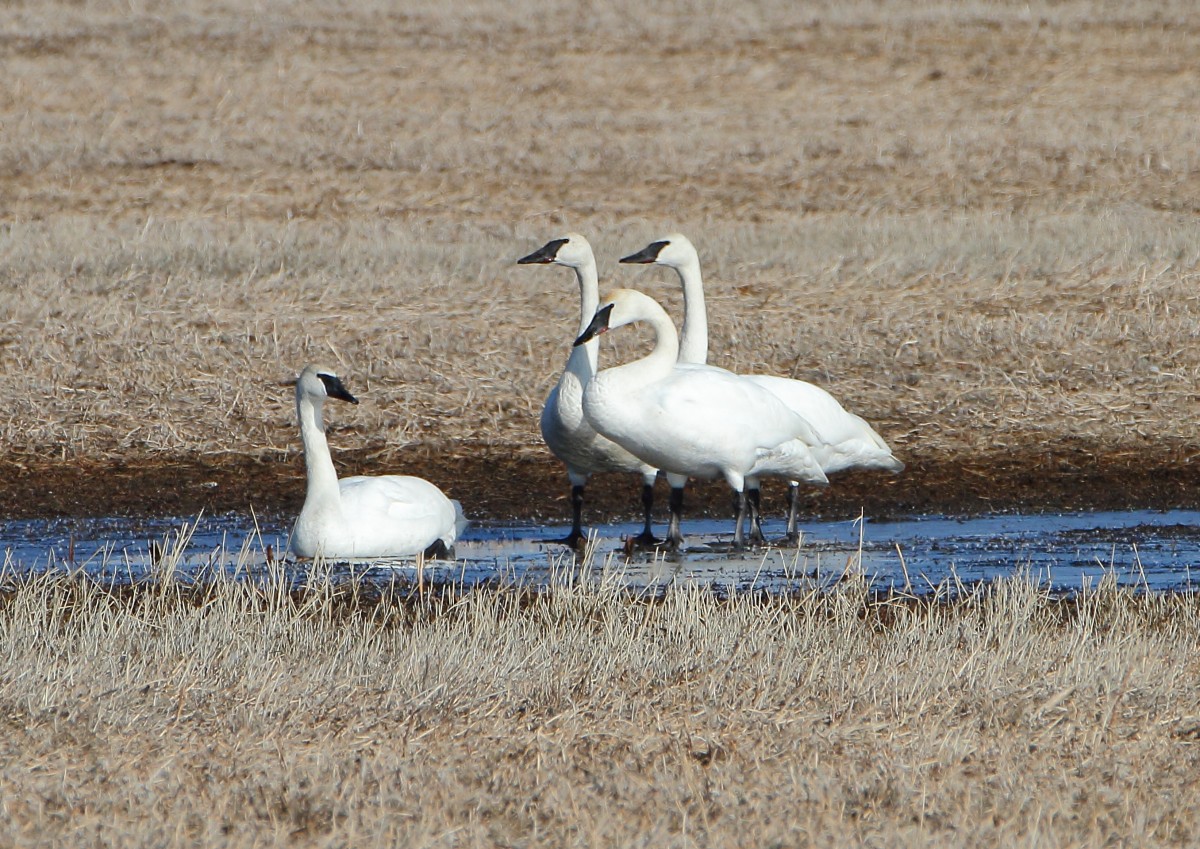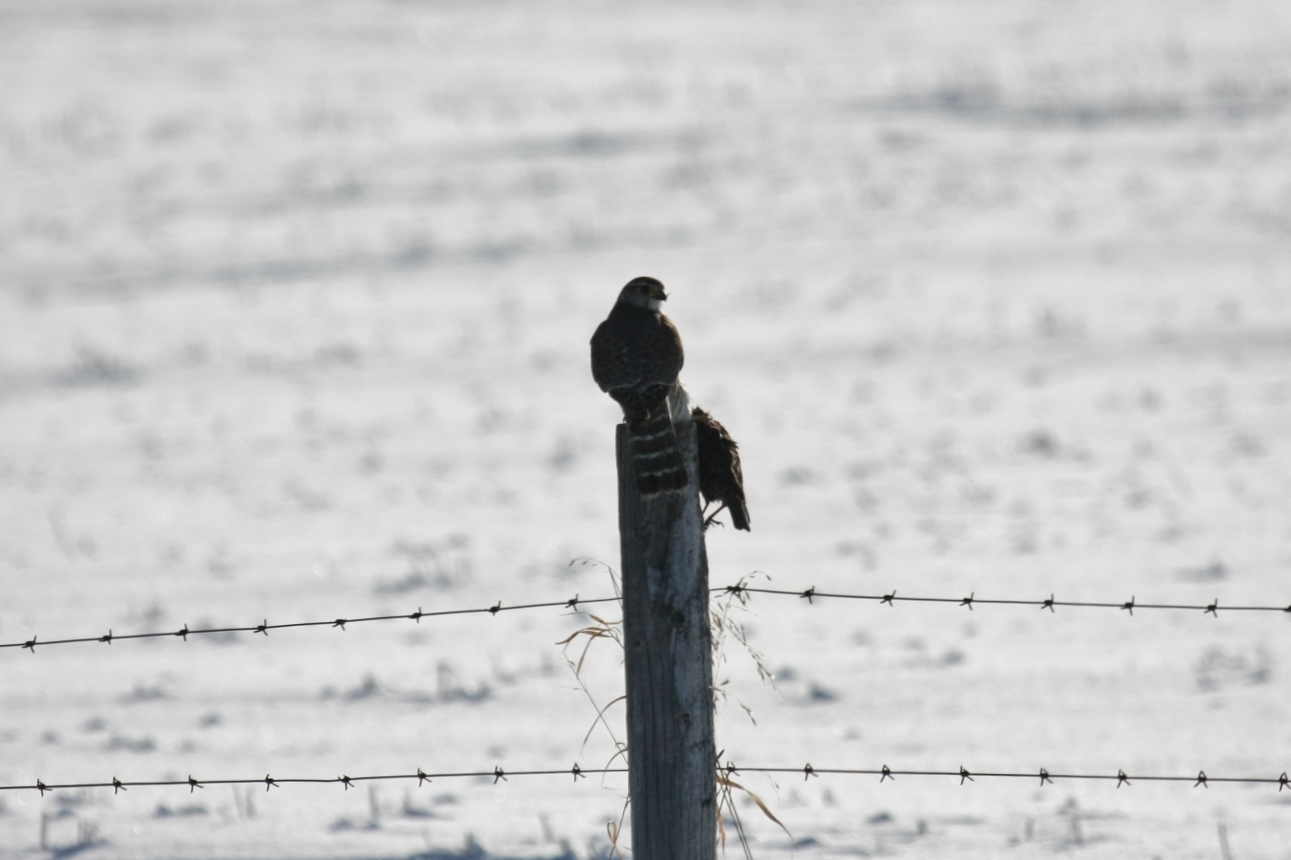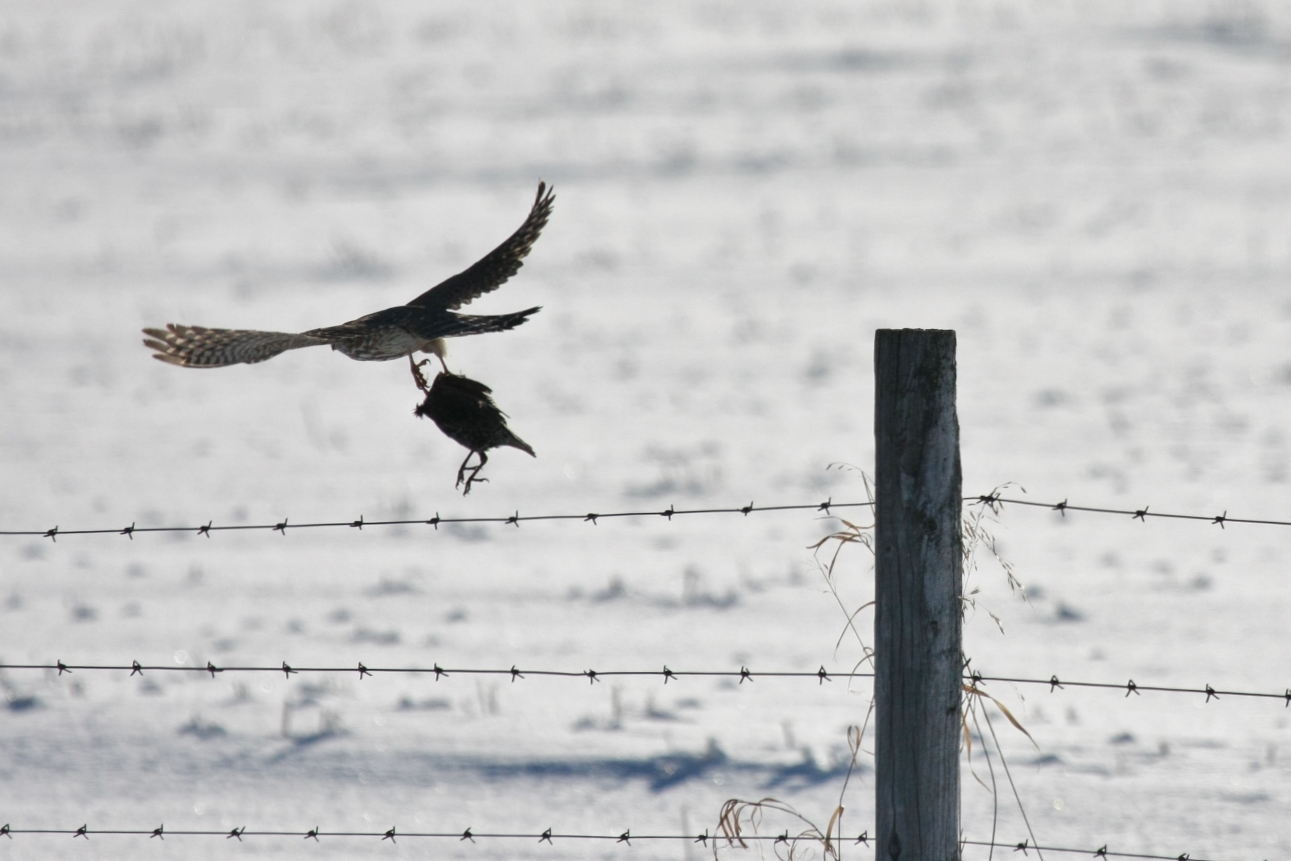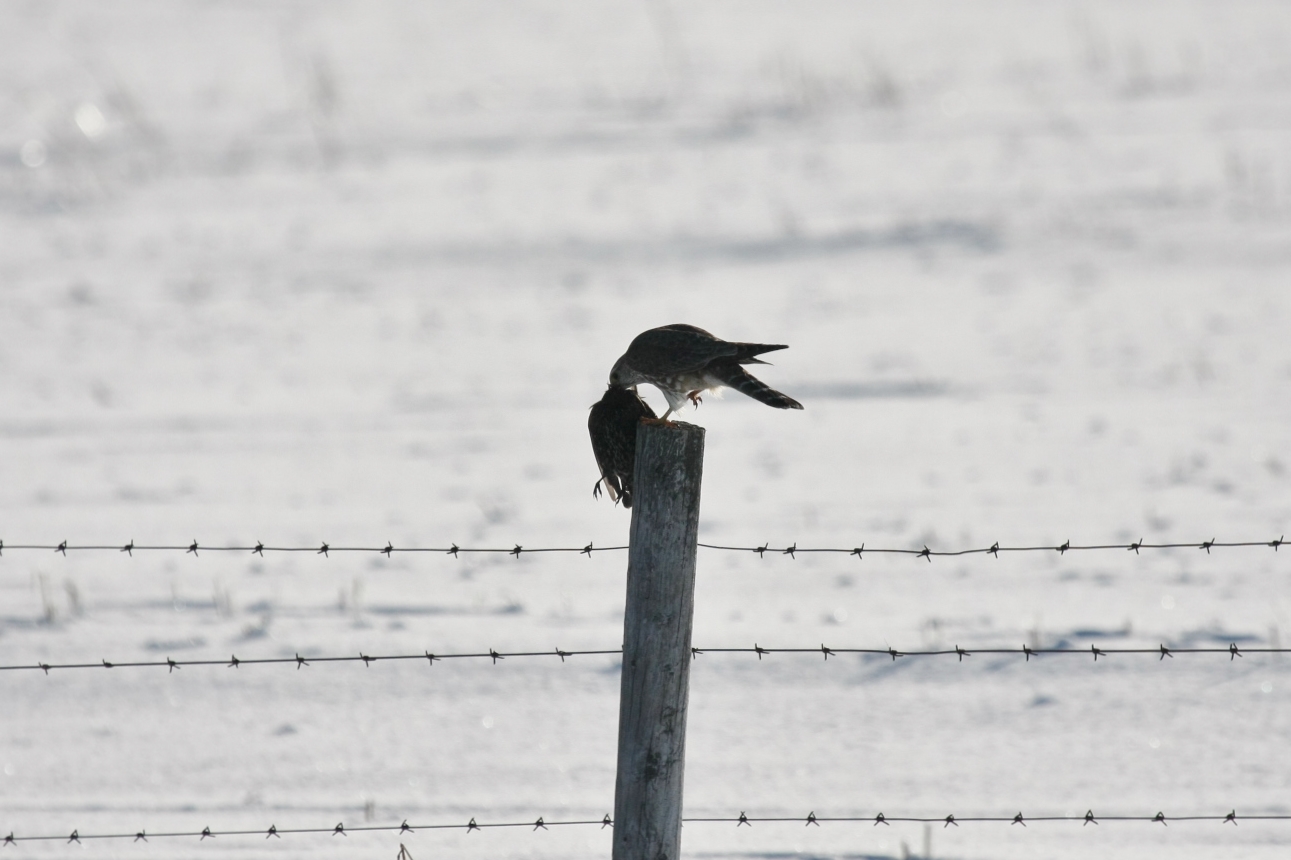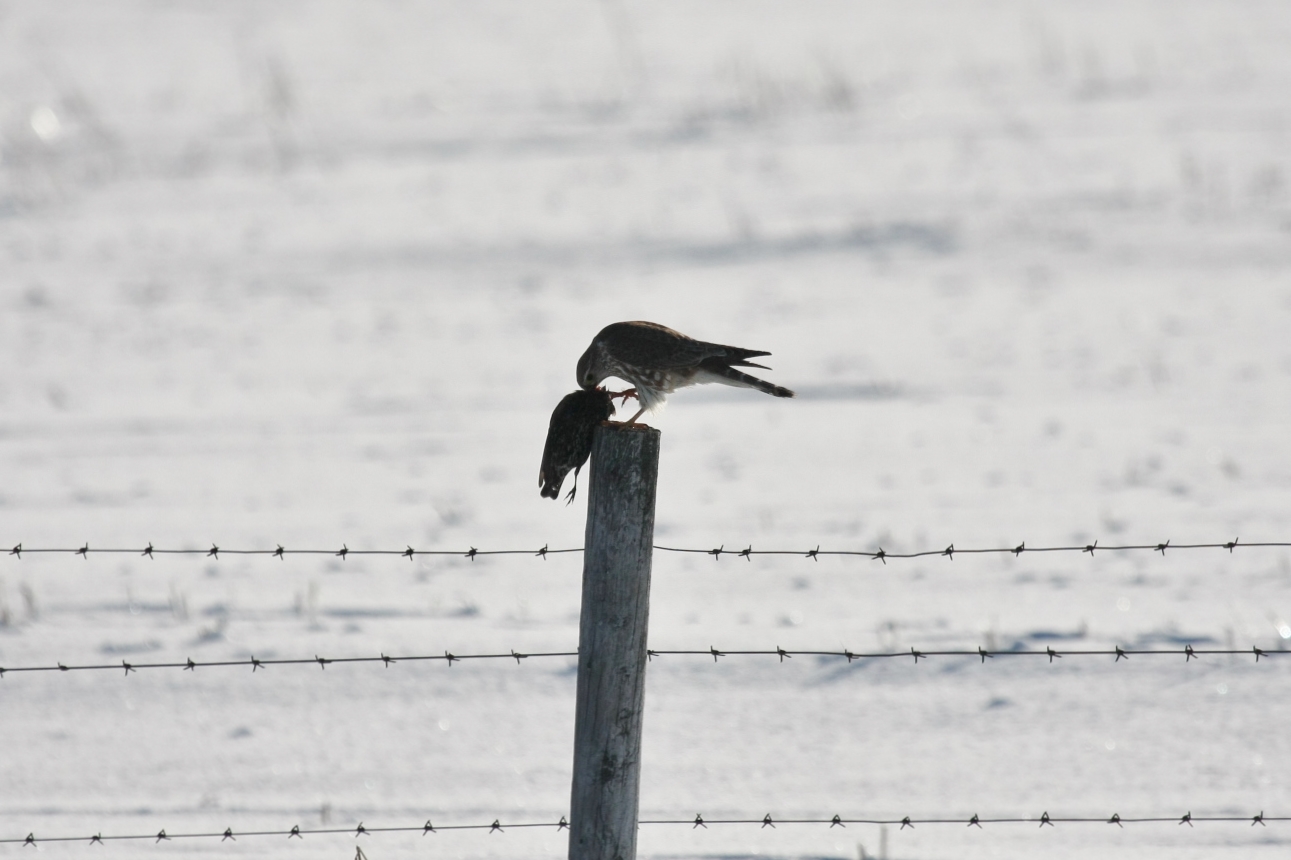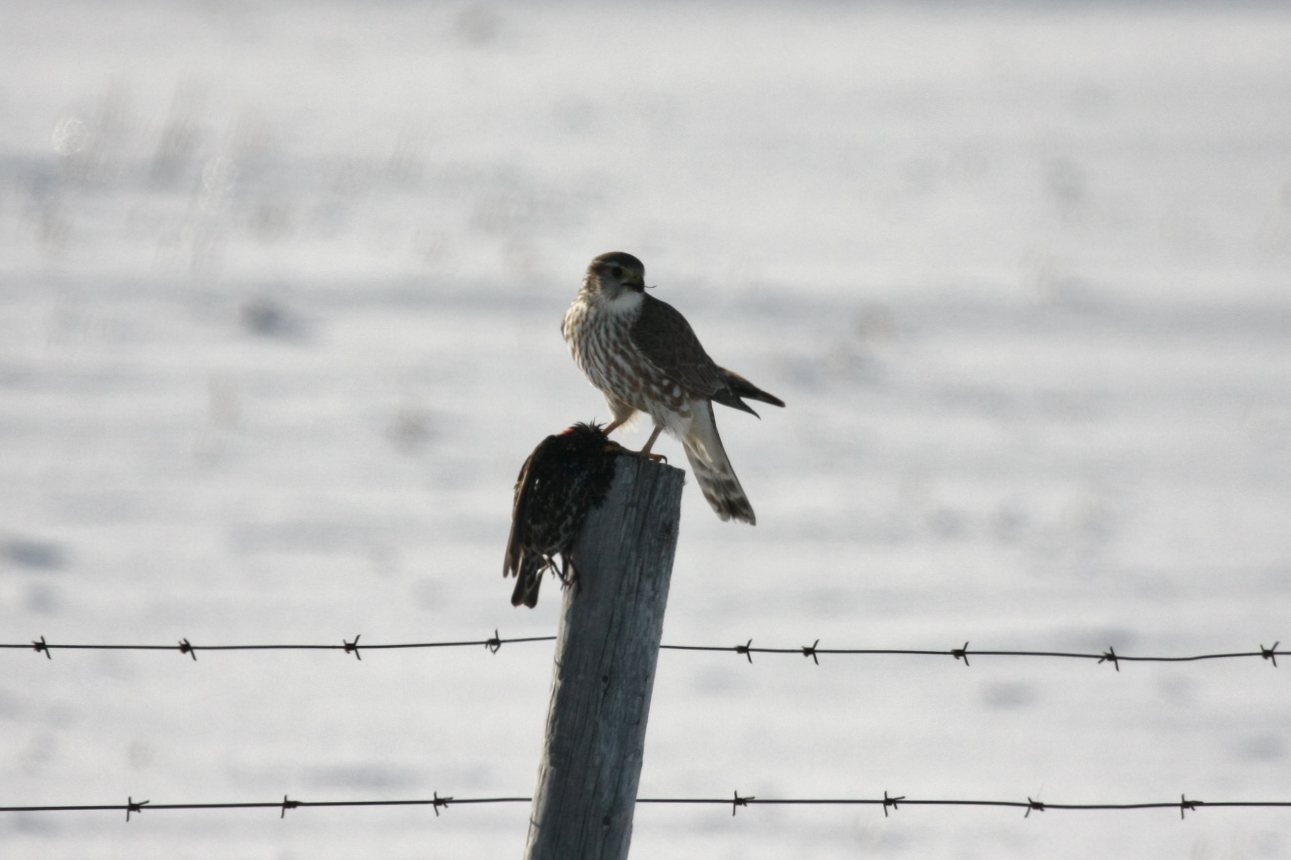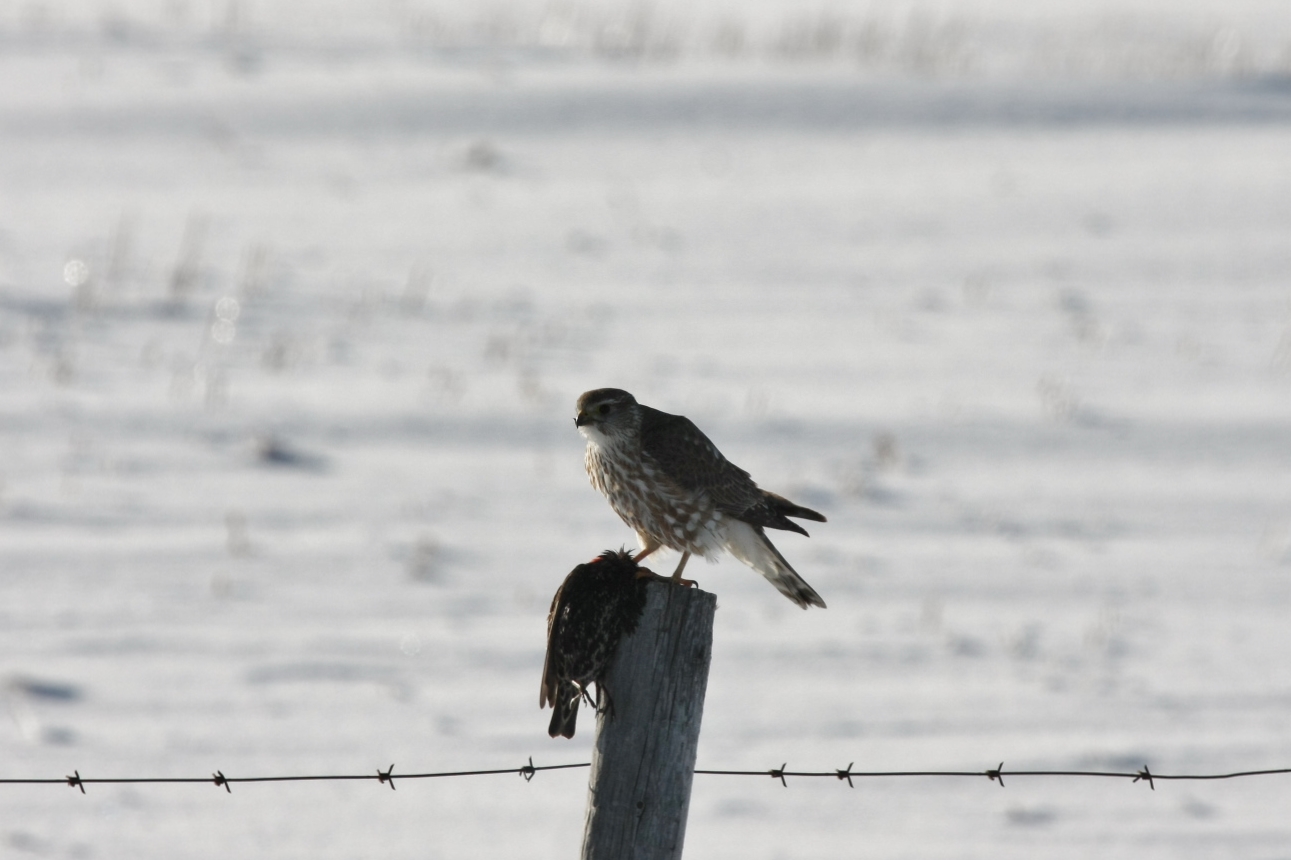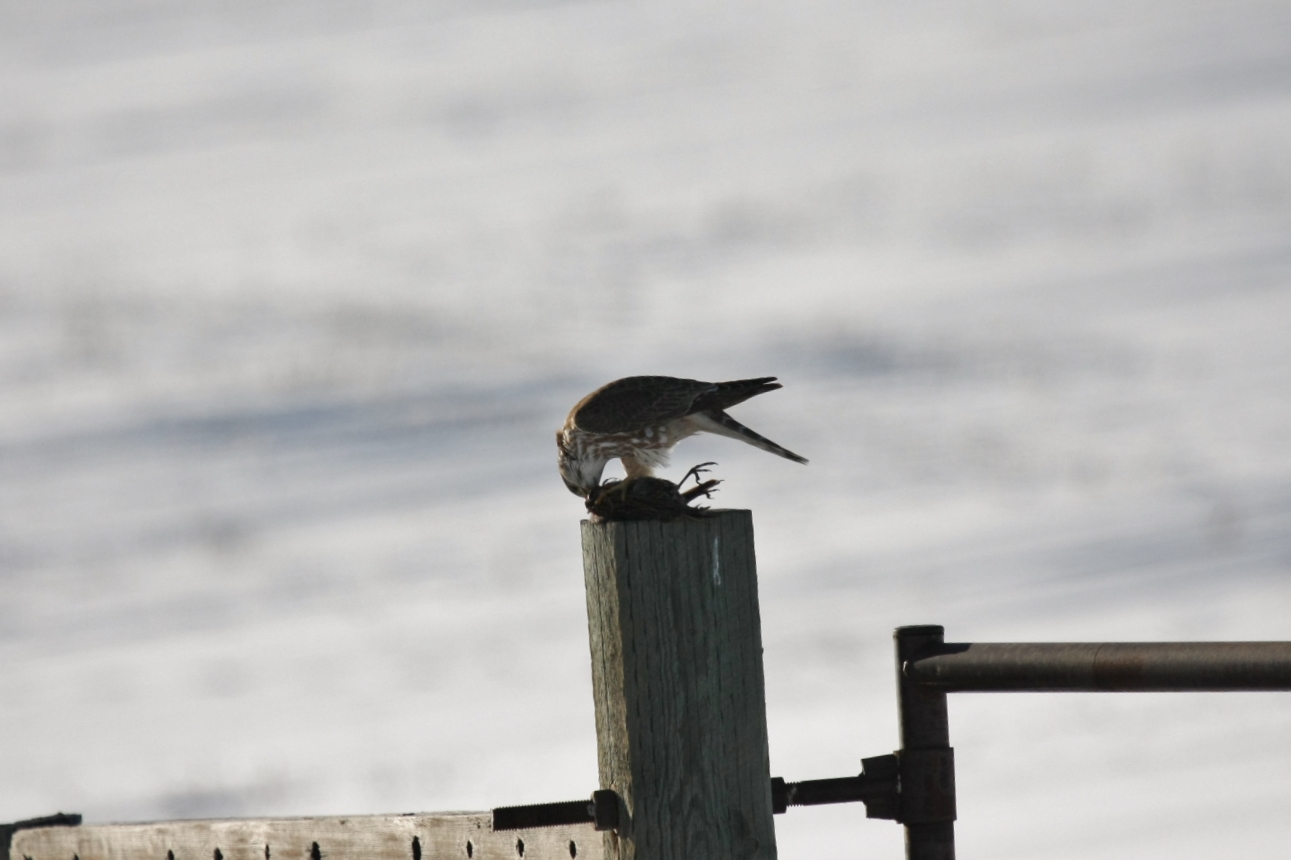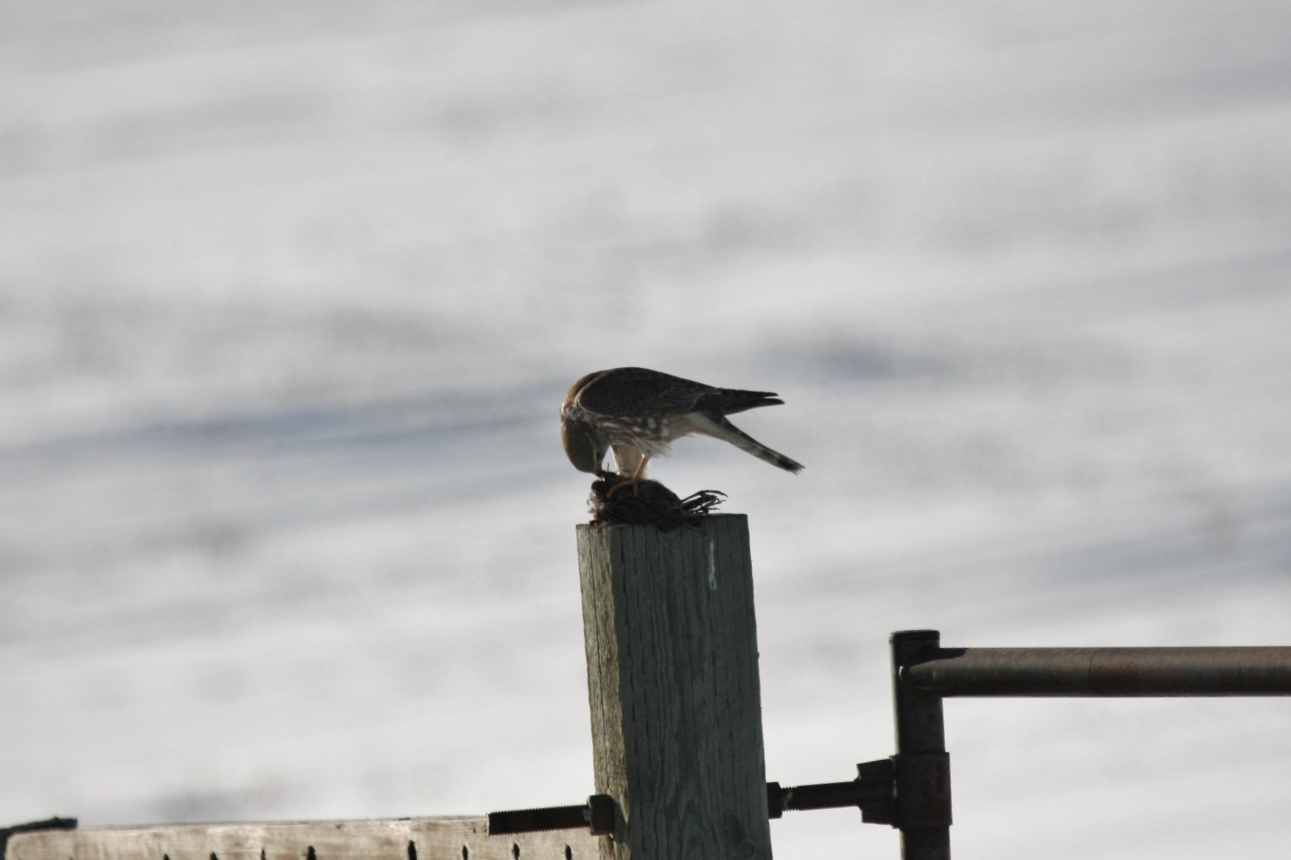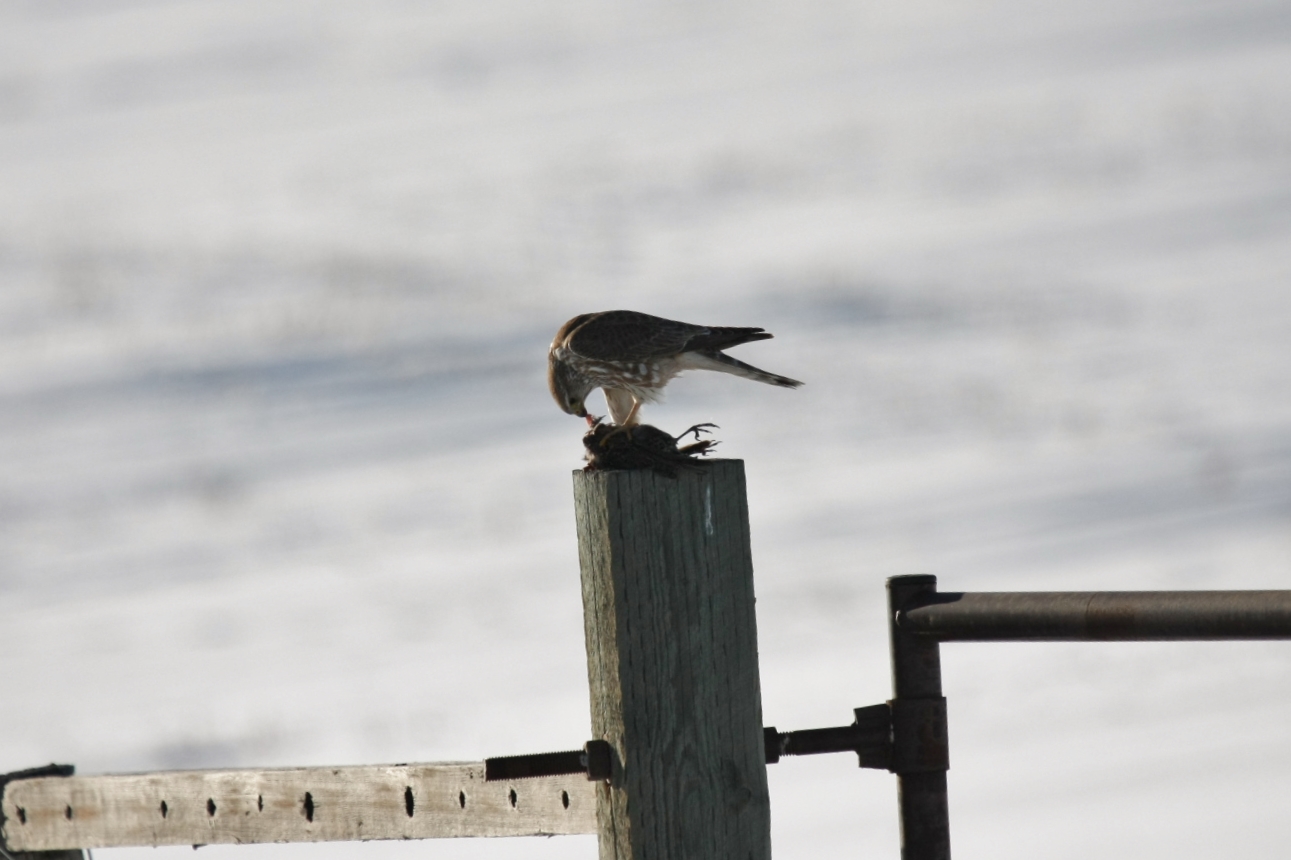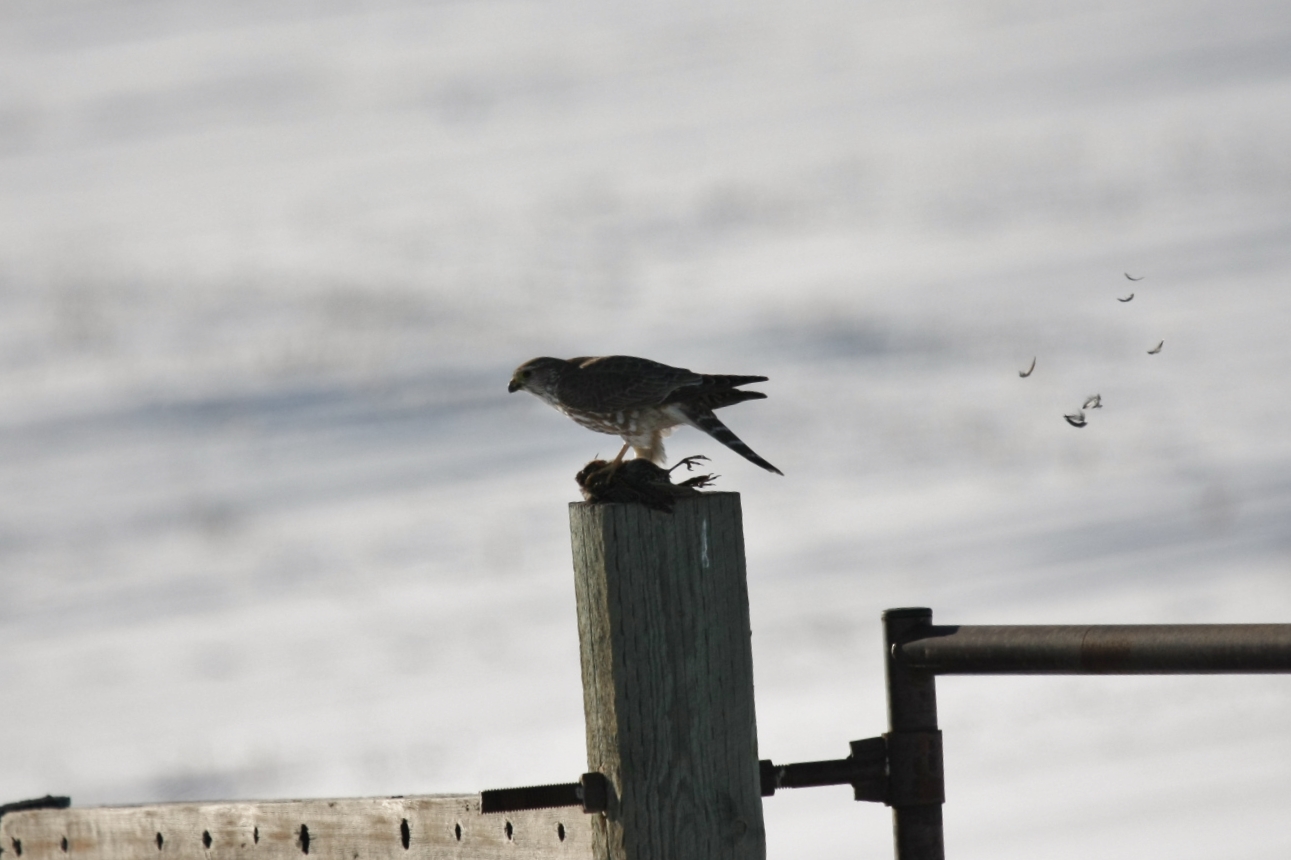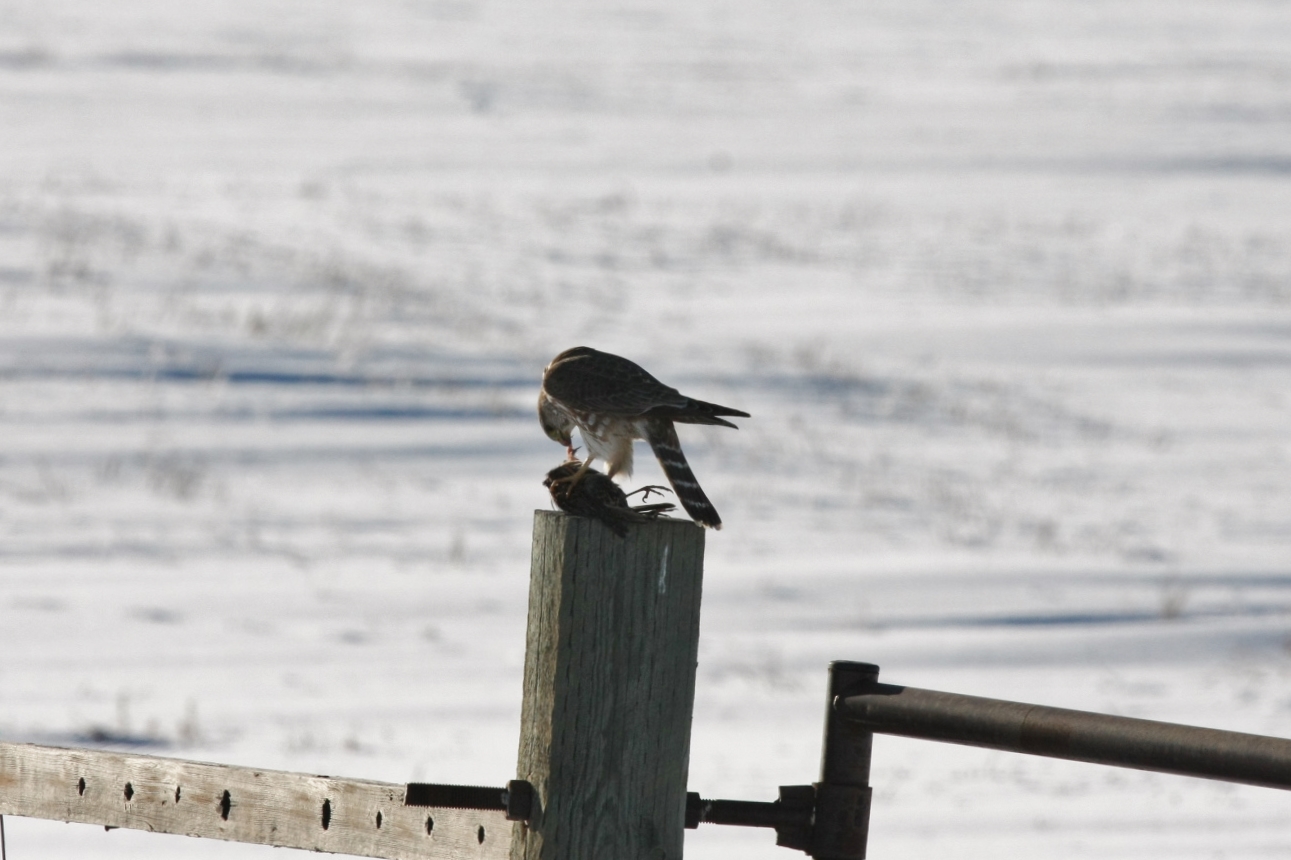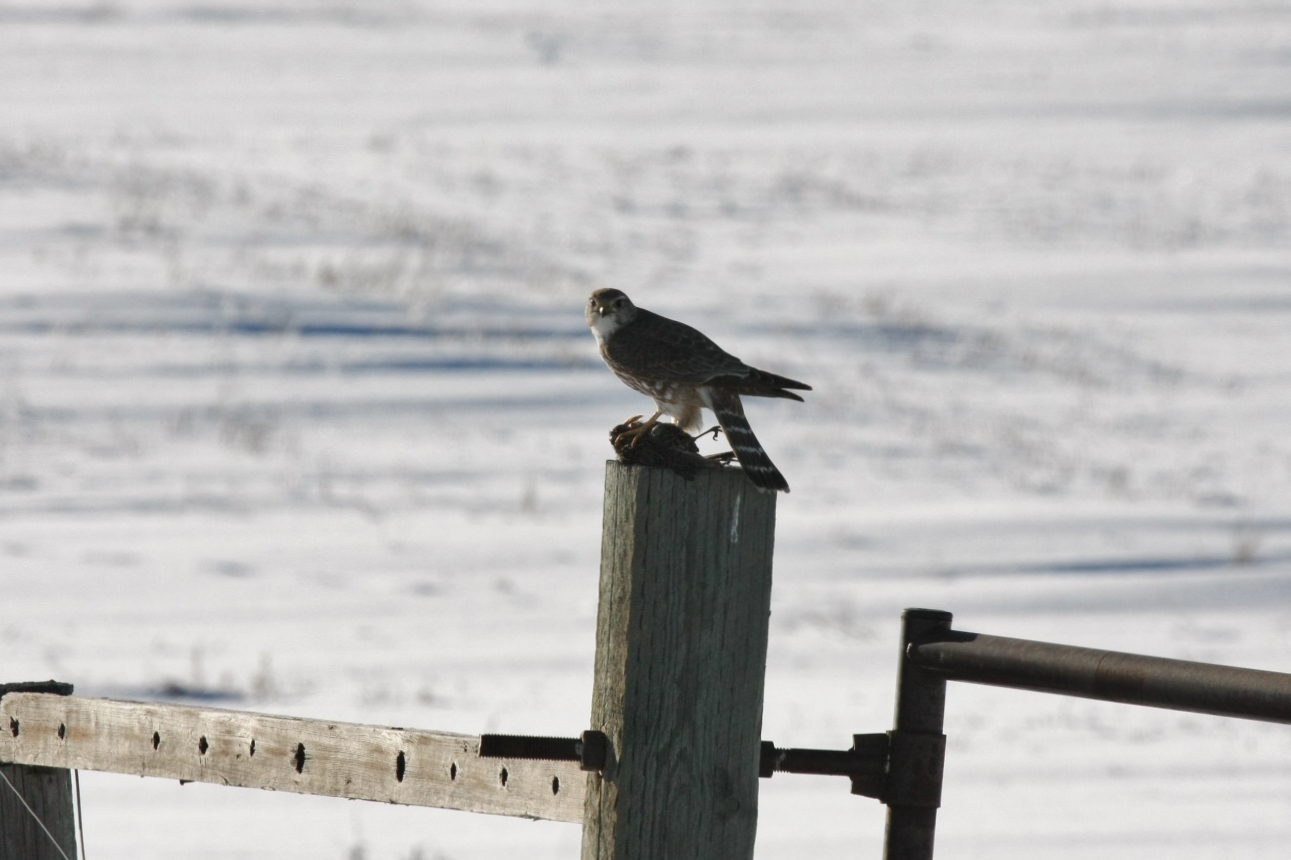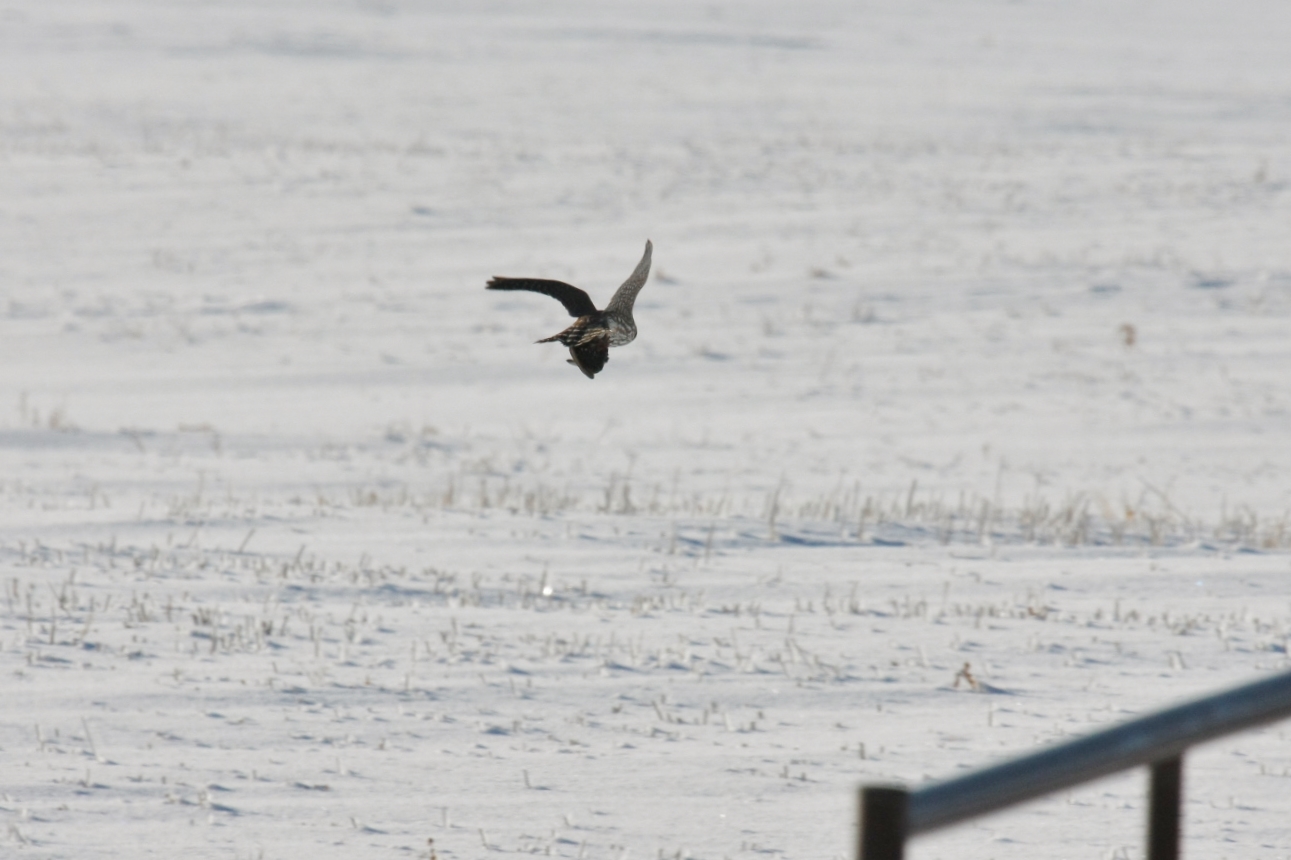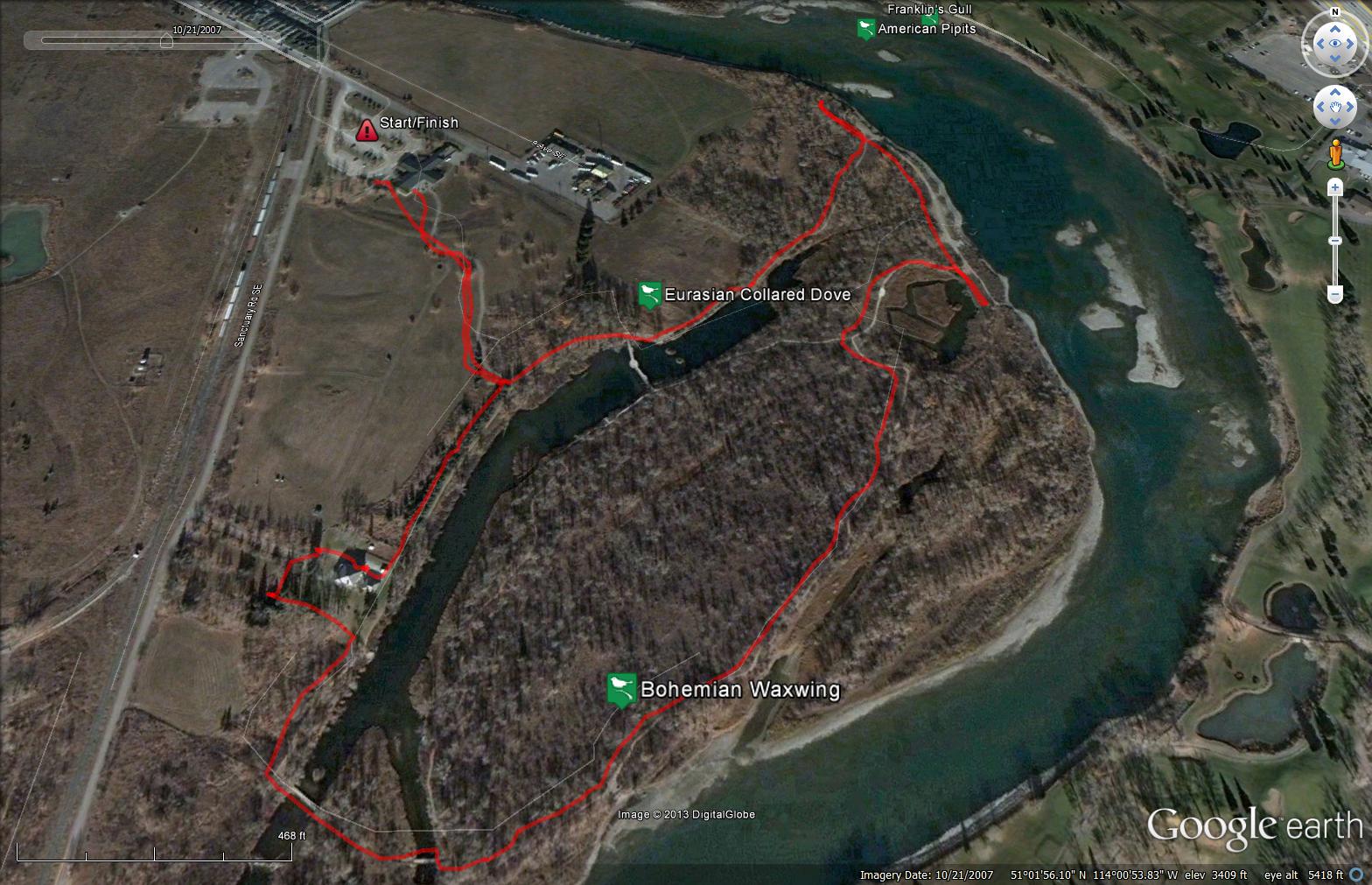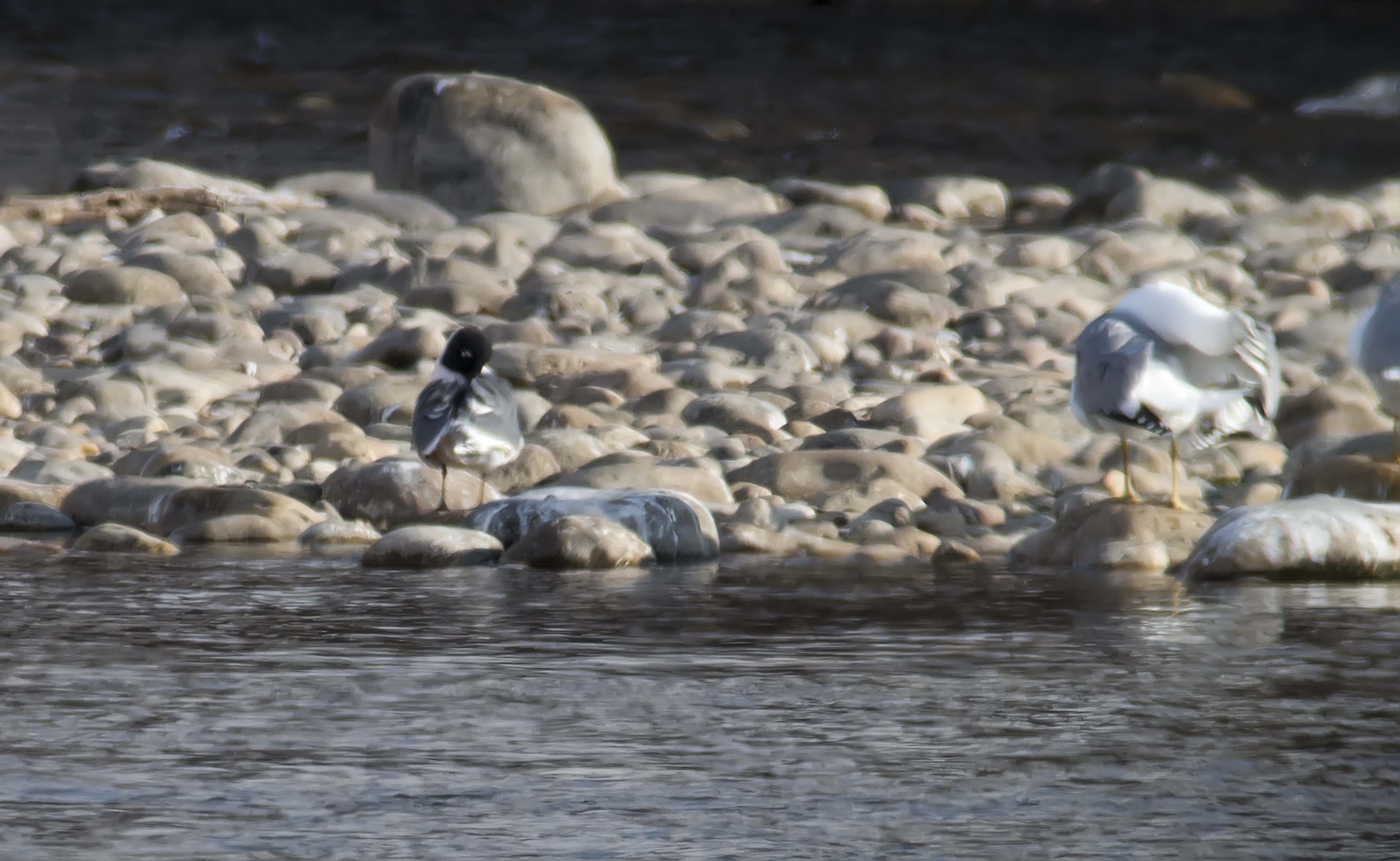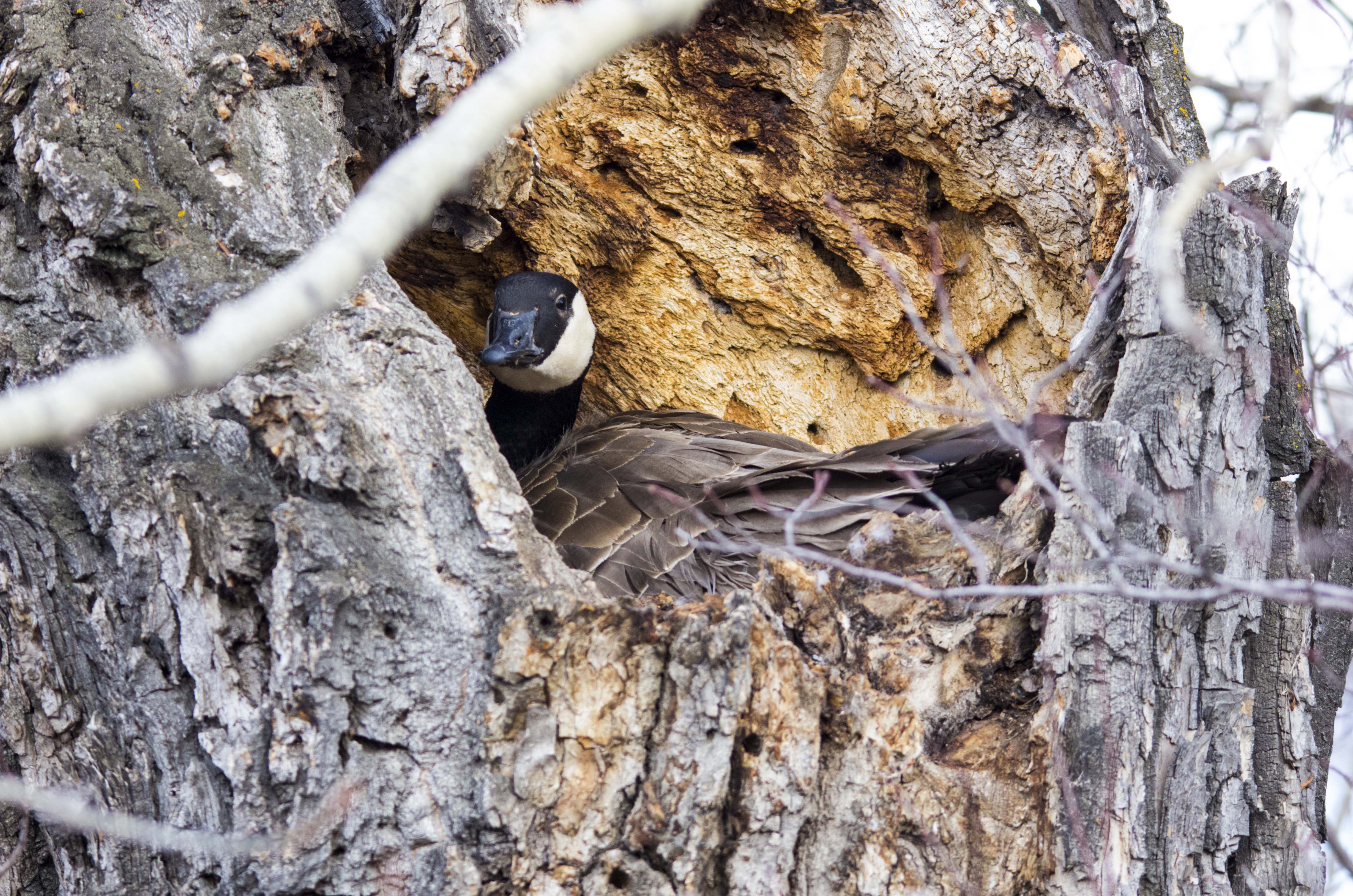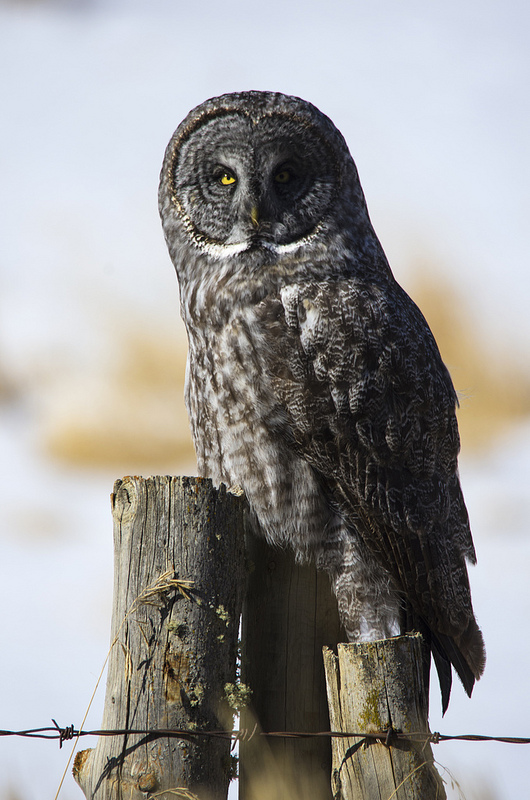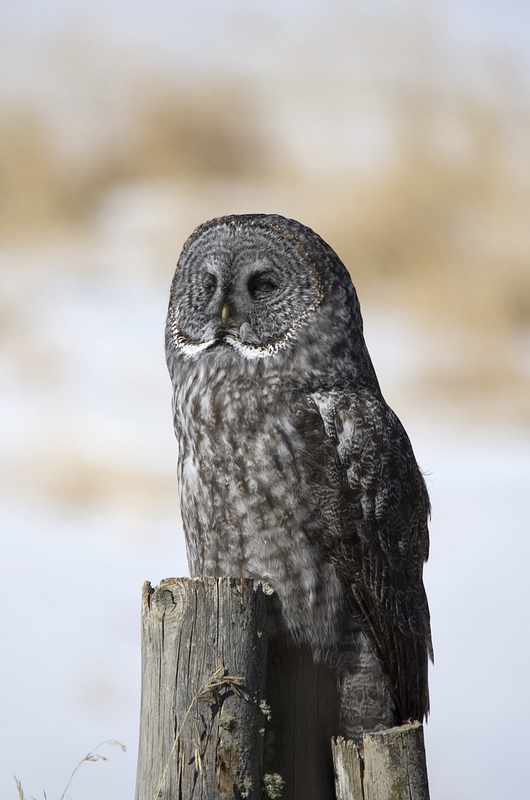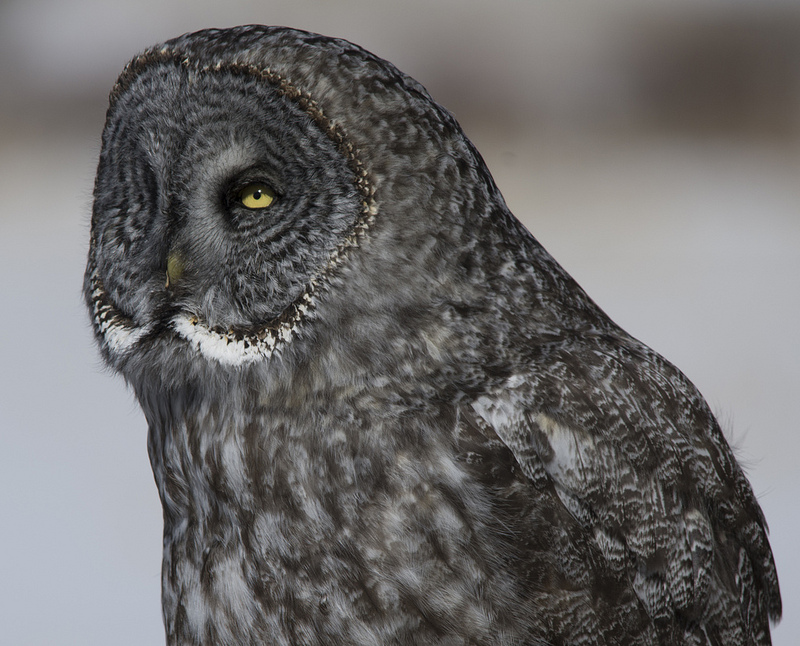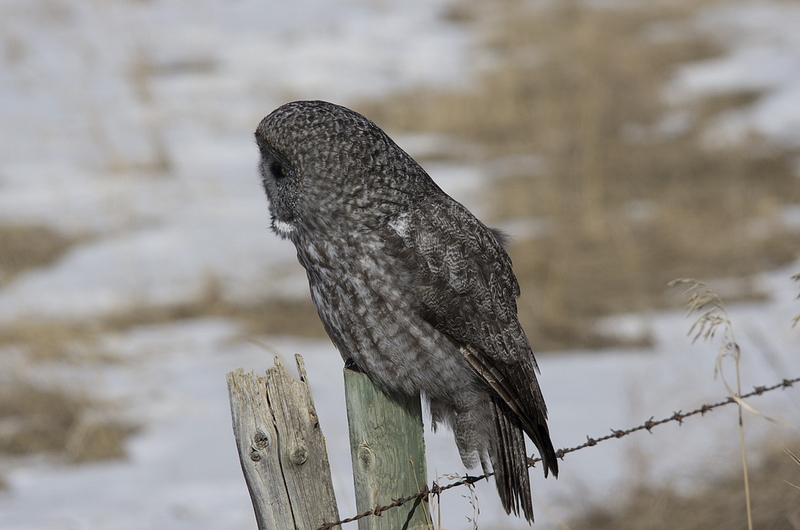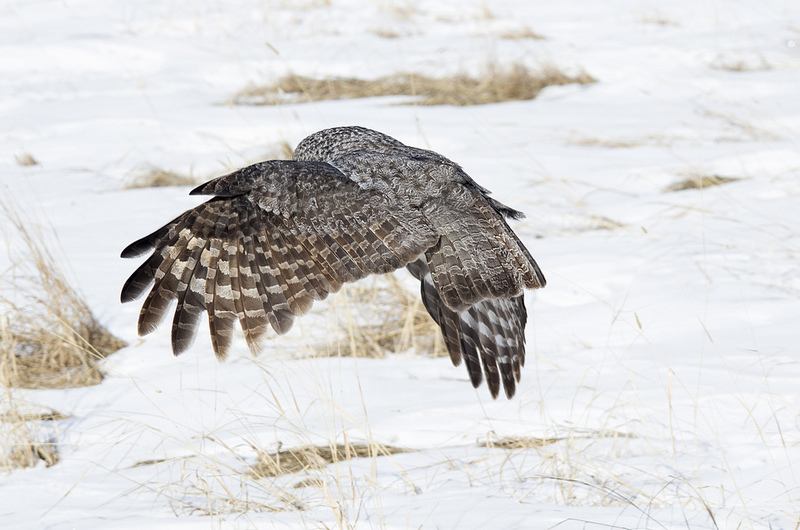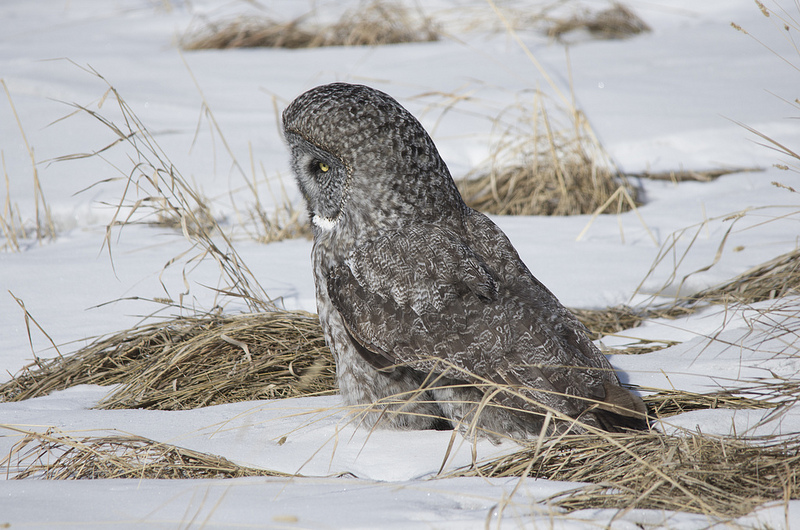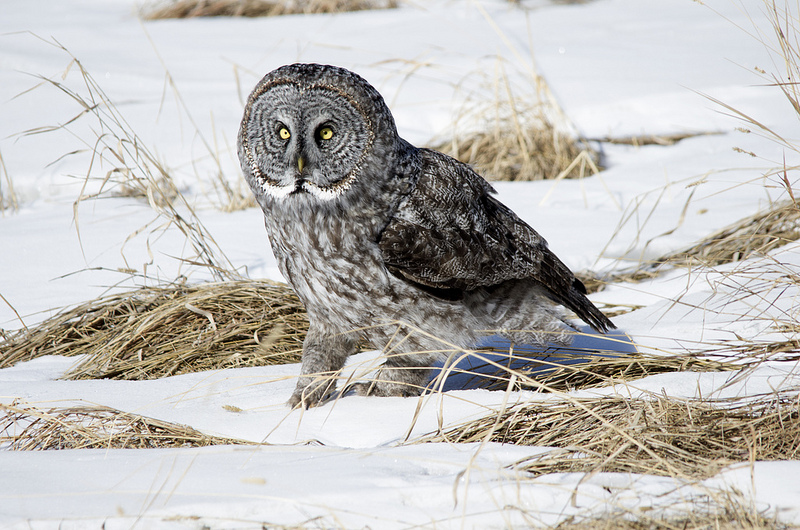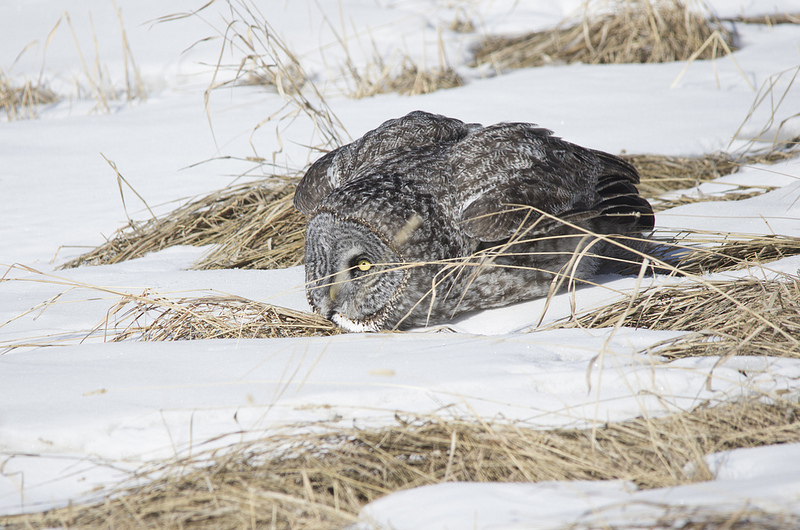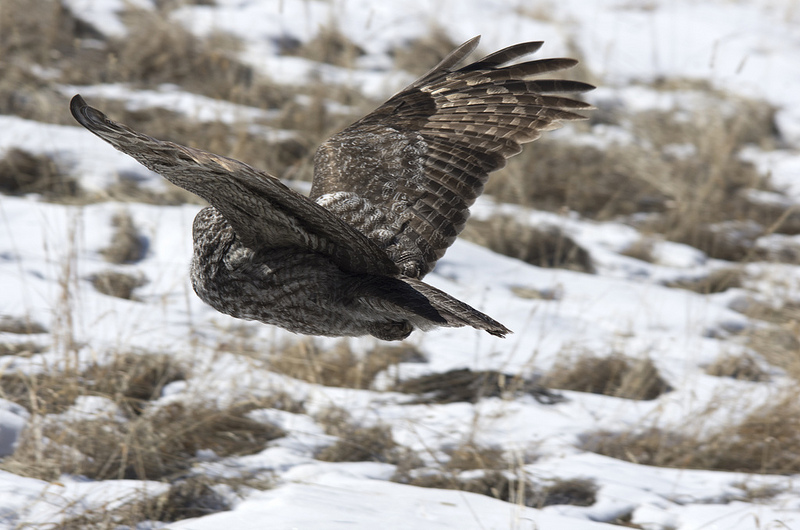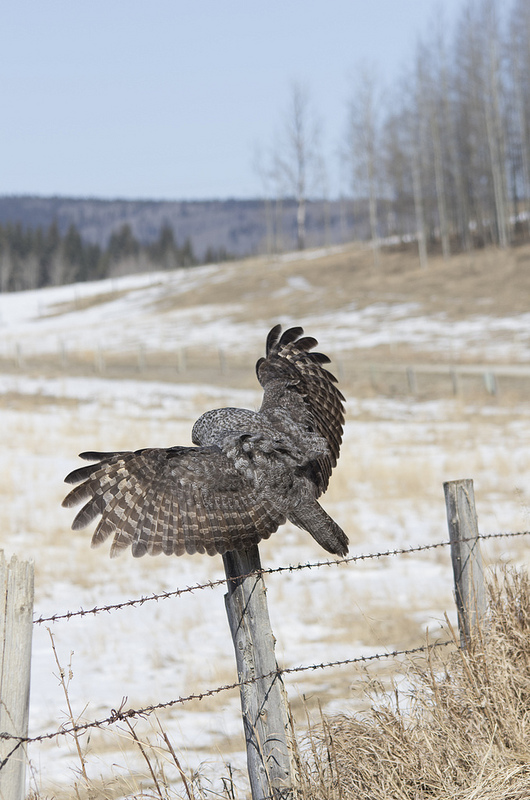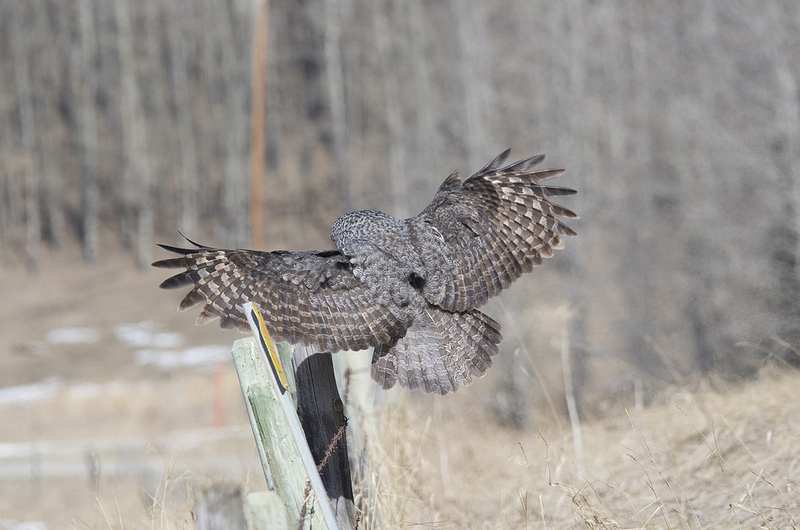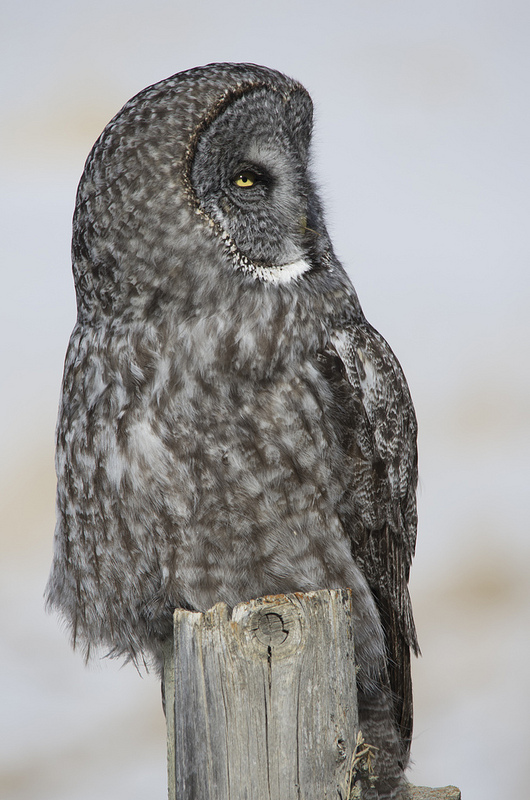Posted by Dan Arndt
While last week was chilly, and a bit overcast, it wasn’t really too much to complain about. This week, the Sunday Curse has struck again. As the weekend approached, the forecast for 10-25 cm of snow by Monday night seemed a bit overzealous, maybe even pessimistic. Sadly, this was one time that the weatherman was right. Sunday morning greeted us with about 10cm of already accumulated snow, and a brisk wind out of the north made for risky driving and for terrible visibility at times, though we were lucky and also had some clear patches. A small, hardy group greeted us at 8 AM, and while some of the walk was abbreviated due to the conditions, we still had a good number of new species (or at least newly photographed species) for the year.
Earlier in the week I had finally received the Swarovski ATX 85 that has been graciously loaned to us, so I’ve included a good number of photos that were taken with the Swarovski TLS APO digiscoping adapter, taken with my Pentax K-30. I have to say, I’ve never been quite so happy that that camera is weather sealed as I was today. As I mentioned to the birding students, this is a scope that after an hour of playing with it at home had me wanting to buy it for myself, and after spending some time with it this afternoon and seeing the results I managed to get in the terrible light and low visibility, that decision has been set in stone. You’ll see what I mean below…

Elliston Park
You might notice first of all that it doesn’t look like we saw much on the southern portion of our walk. That is mostly true. By the time we cleared the eastern edge of the tree cover, the clouds had lowered, the wind picked up, and the snowfall really started coming in sideways, pelting us with wet ice crystals, and some of us were simply not prepared for things to get as bad as they did, so we powered on straight to the parking lot to get out of the wind and sleet.
Despite all that doom and gloom, as I mentioned above, we got a whole pile of new bird sightings! Almost as soon as we started, we heard, then saw, a flock of American Tree Sparrows flitting about, barely pausing long enough for any of us to get good looks until they were quite far away.

American Tree Sparrows
From our vantage point we could see out onto the water quite well at this point, and with the trees covering us from the wind, we took a few minutes to look out over the lake, and managed to spot the first new species for the group, this American Wigeon. There were about half a dozen of these birds on Elliston Lake, standing out in stark contrast to the other waterfowl present. Additionally, this was where we had good views of the second new species of the day, the Lesser Scaup.

American Wigeon (rear) and Mallards (foreground)

Lesser Scaup
(digiscoped with Swarovski ATX 85 + Pentax K-30)
While we have seen Townsend’s Solitaires this year, finding this one in the storm was a stroke of luck and good field identification on the part of some of our students! They are always such a pleasure to see! With the wind and snow picking up a bit at this time, we did check out a pair of Northern Flickers waiting out the storm on the leeward side of a low tree. Where they might have been nesting in or around this park is a mystery, as there really aren’t any trees large enough or old enough to provide them a suitable nest area!

Townsend’s Solitaire

Male (above) and female (below) hybrid Northern Flickers
We turned our attention back to the water, and found this lone American Coot. These aren’t a bird you expect to see all by its lonesome, nor in this kind of weather! An early arrival, and quite the surprise to see here! There were also a good number of Northern Shovelers in the north-east section of lake, though with the snow and wind picking up, good photos were hard to come by.

American Coot

female (left) and male (right) Northern Shovelers

male Northern Shoveler
(digiscoped with Swarovski ATX 85 + Pentax K-30)
From here on, we powered through to the end, with a few stops to check out some unusual sounds and sights, and a few nice finds in the sloughs east of Elliston Park, including many more Northern Shovelers, American Wigeons, and even a lone male Ruddy Duck, the blowing snow played havoc with my auto focus, and I didn’t make it back around after the walk with the digiscoping setup.
I did end up heading back to check out the gulls with the digiscope rig, and while I didn’t find anything particularly uncommon, the practice with both stationary birds and birds in flight was absolutely priceless. While I’ve already had some experience with digiscoping, the ease which I was able to pick up the different skills that this scope requires, as well as the particular idiosyncrasies of the setup were very quick to adapt to, and the learning curve was extremely shallow. I have to say, it’ll be a hard sell to go back to the other gear once June comes around!

Herring, California, and Ring-billed Gulls
(digiscoped with Swarovski ATX 85 + Pentax K-30)

California Gull in flight
(digiscoped with Swarovski ATX 85 + Pentax K-30)

Herring Gull in flight in the snowstorm
(digiscoped with Swarovski ATX 85 + Pentax K-30)
See you next week, and good birding!
